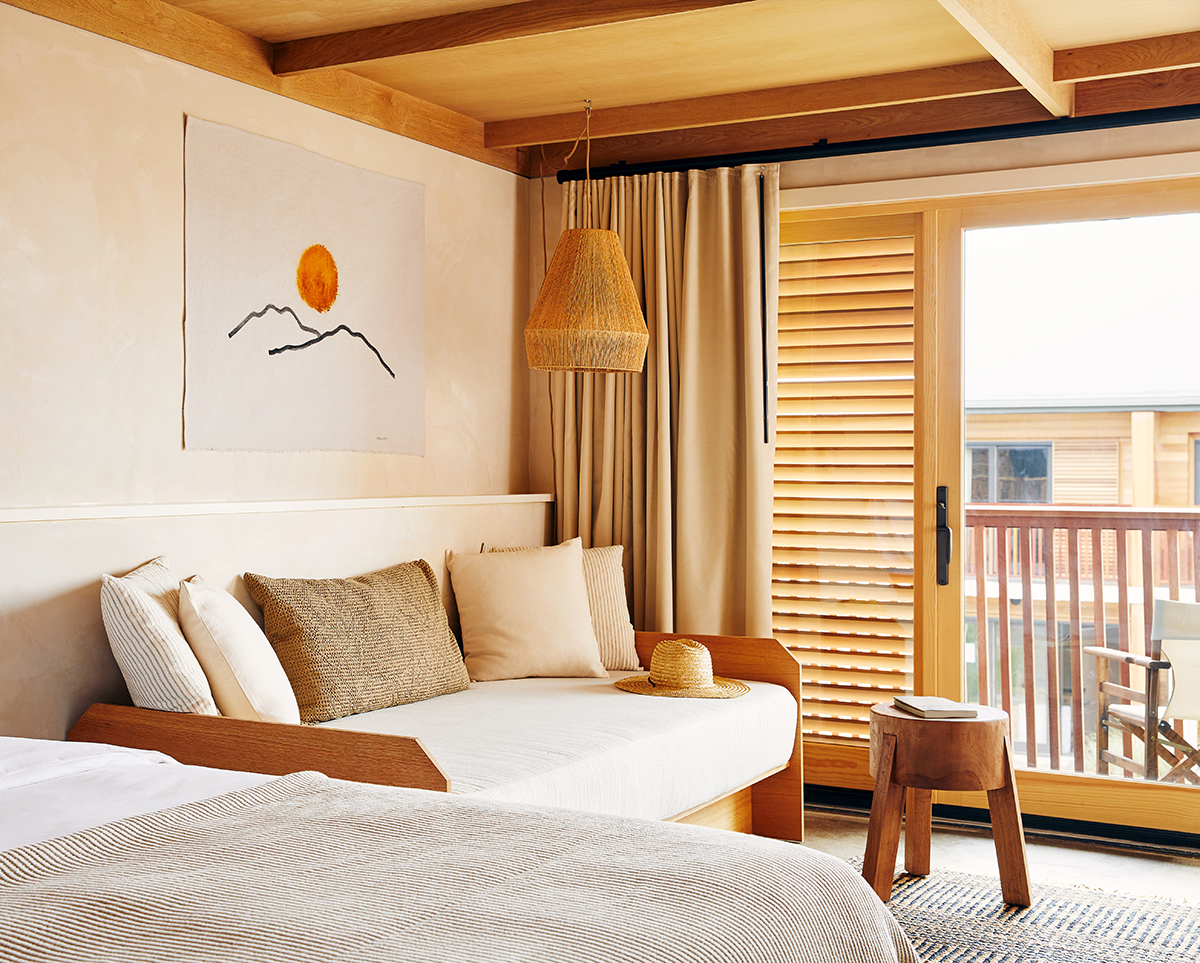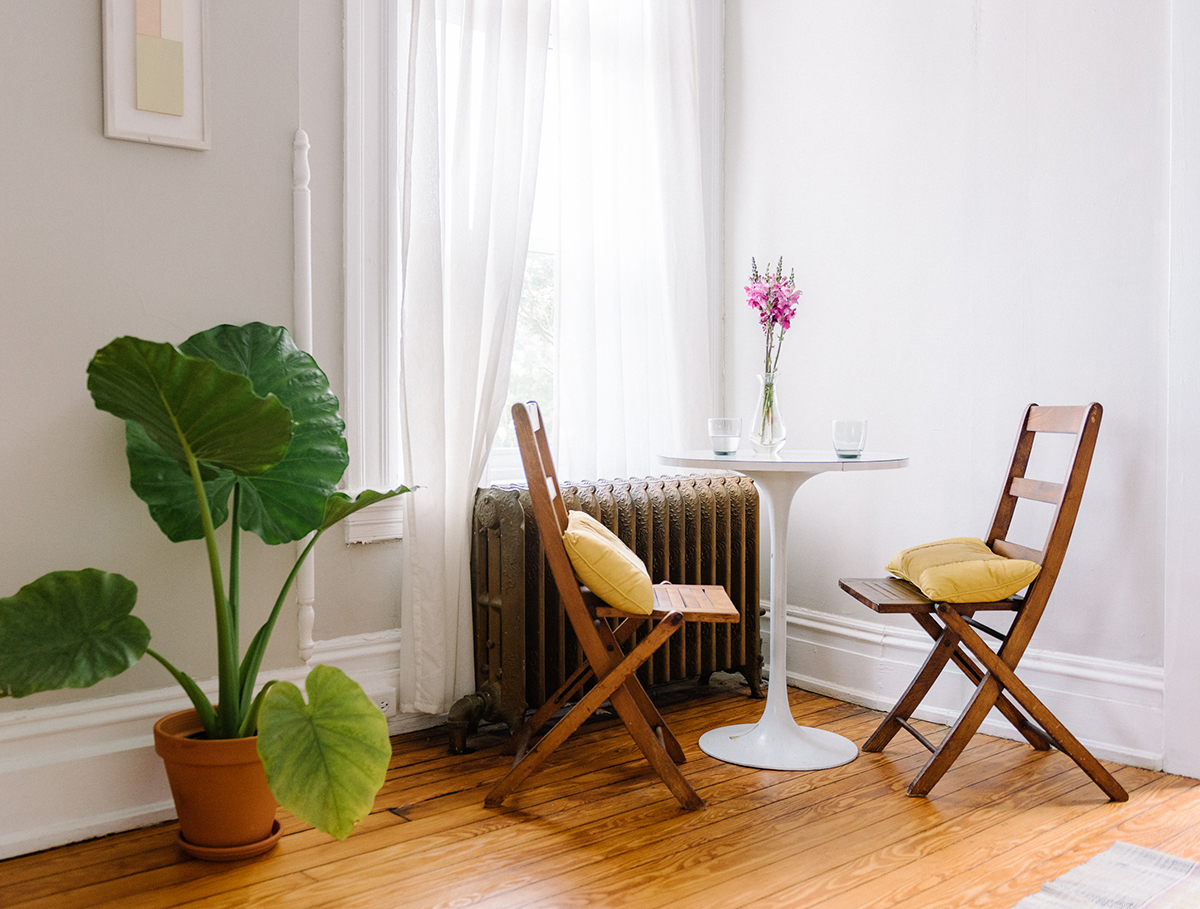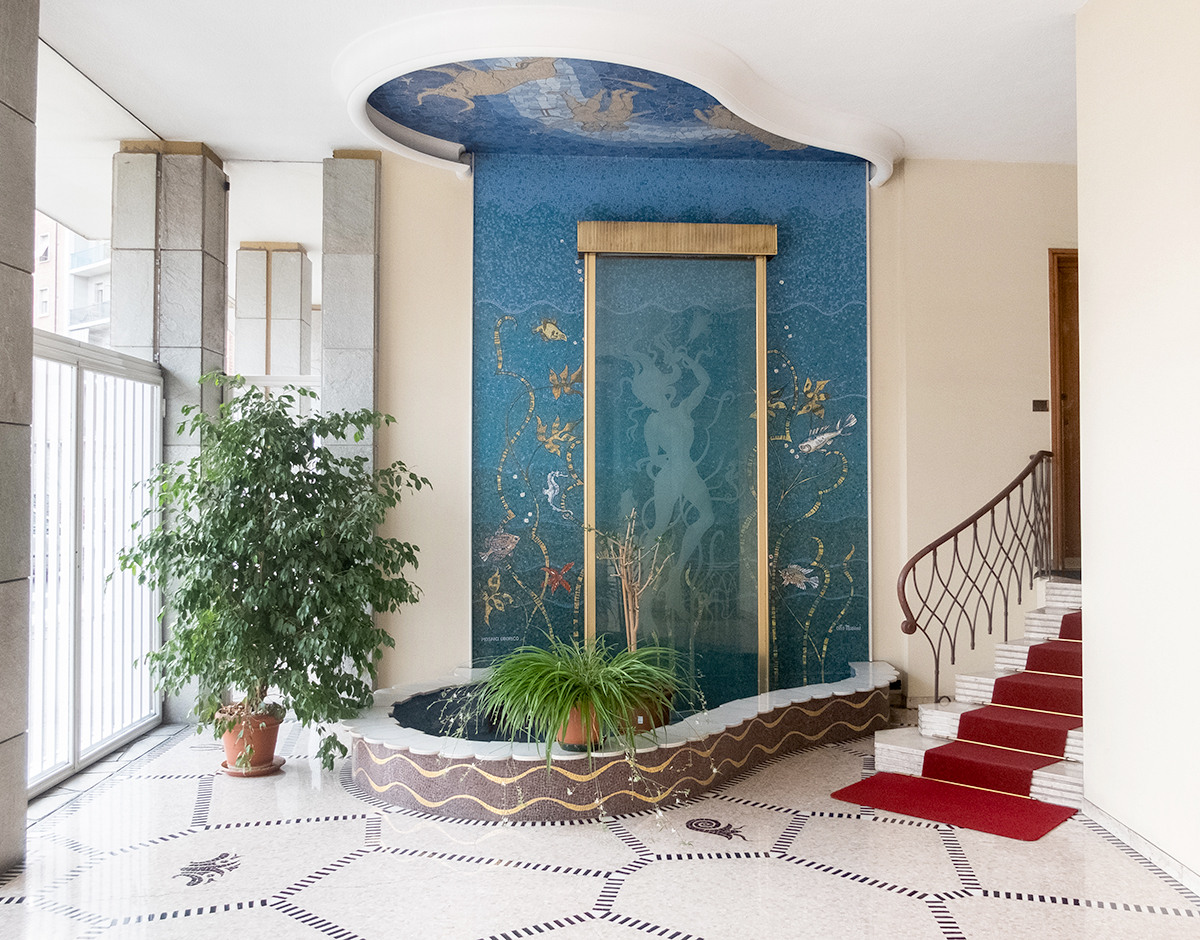
10.05.21
Interiors
13 Incredible Mid-Century Lobbies in Turin Featuring Mosaic Walls, Sculptural Murals, and Other Avant-Garde Motifs
Hidden away from the rest of Italy, in the Piedmont region, the city of Turin has its own distinct culture and atmosphere. That’s why I love it so much, and have been traveling there regularly since 2010, when I visited Casa Mollino for the first time. I became very good friends with Fulvio Ferrari — the Casa’s owner and the source of many fascinating stories from Italian design history — and used his tips to explore Turin more and more with every visit. Once the capital of Italy, the city has always been the cultural and industrial powerhouse of the country, particularly flourishing during the second half of the last century, when Fiat was one of the biggest car manufacturers in the world. Turin became an intellectual and technological innovator, and its design culture responded to this background in its own special way, becoming extravagant, experimental, and crazy — the opposite of Milan’s more obvious and straightforward aesthetic.
Turin’s design and architecture scene was always very different, in fact. During the 1940s and 50s, a group of highly unorthodox and original designers and architects working in the city were known for their organic and sensual forms, their eclectic inspirations and rich decorations, and their utopian ideas — a Turinese avant-garde. Many interiors reflecting this style remain in tact in the city today. During my most recent trip there this past July, with the additional help of architect and collector Davide Alaimo, I explored the work of these post-war designers and architects, and I got a chance to see and photograph completely unknown spaces. My favorite of those were the doorways I discovered, extraordinary artistic solutions which, hidden from public view, reflect the enduring wildness of the city’s architectural elite.
ALL PHOTOS BY ADAM STECH
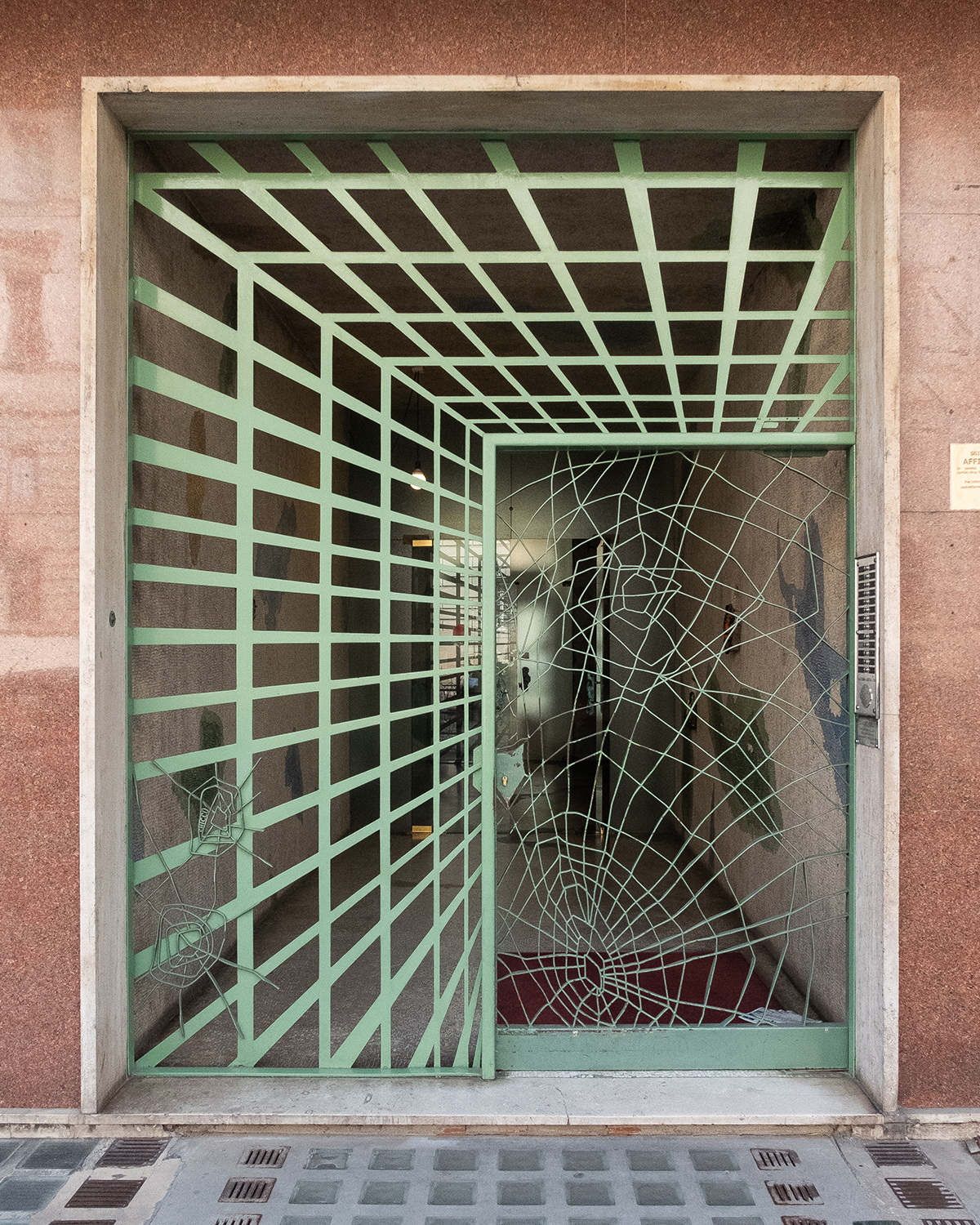
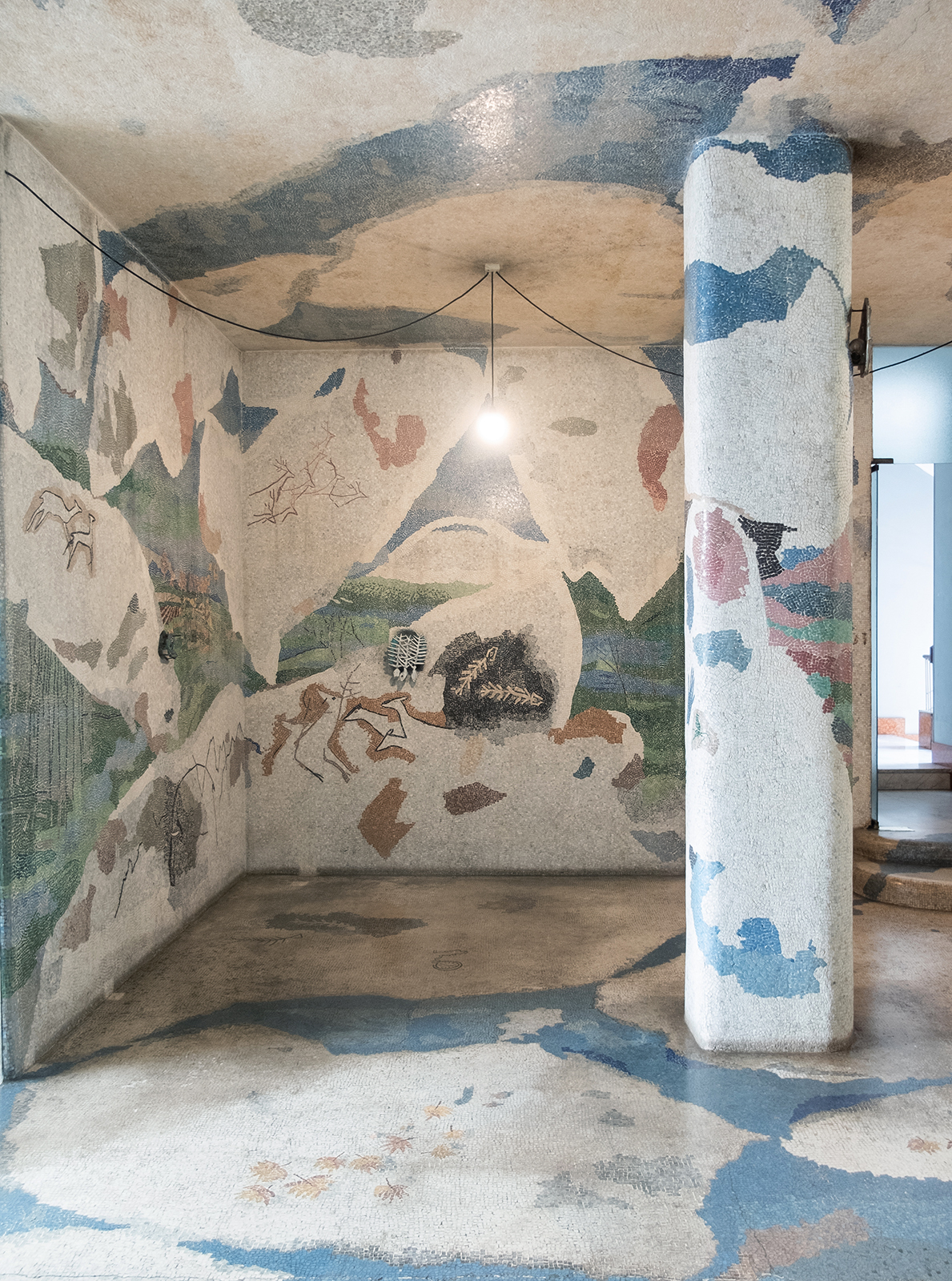
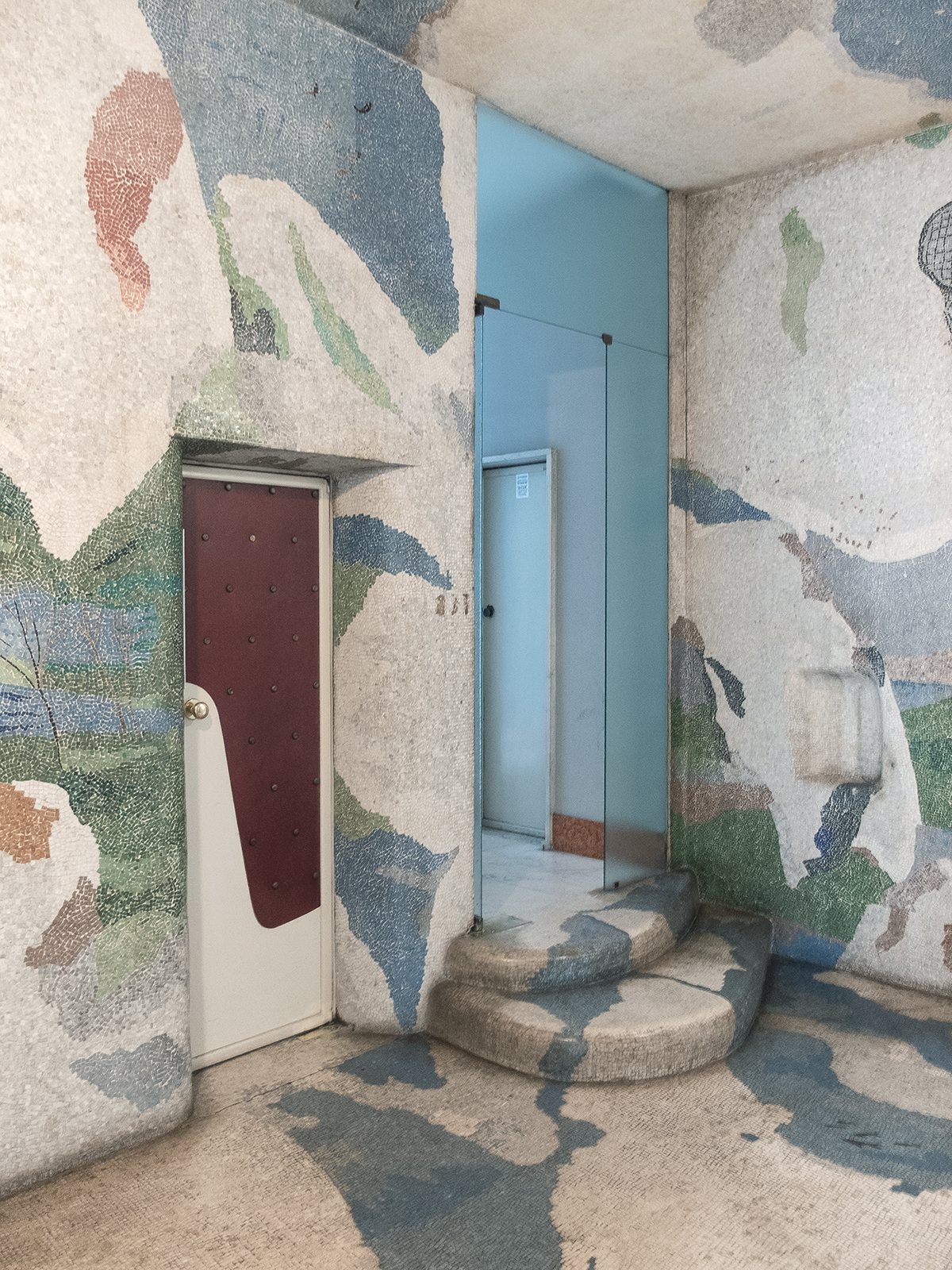
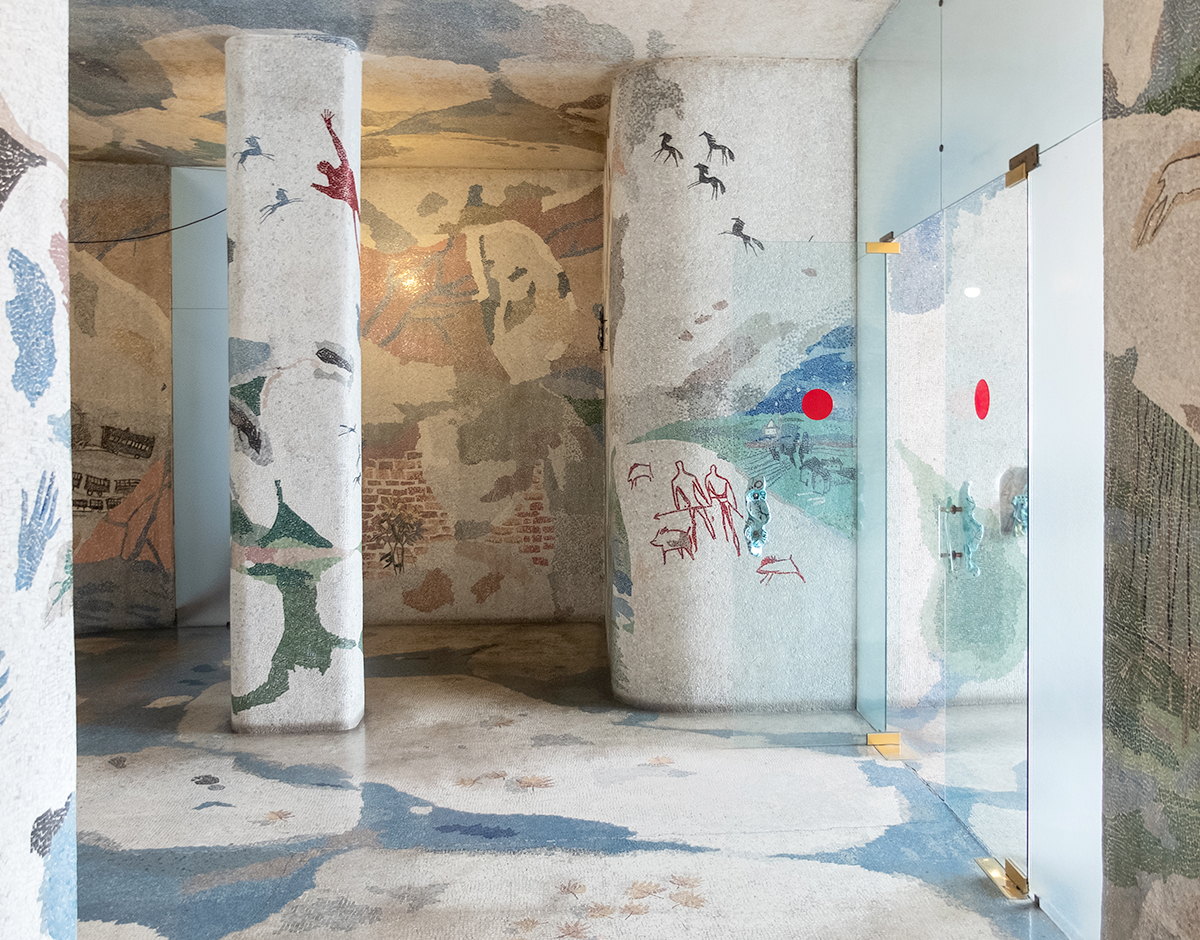
Palazzo on via Albertina
Architect Attilio De Bernardi, artist Riccardo Chicco
1950-1952
Created by local painter Riccardo Chicco, this entryway in the center of the city is completely covered with colorful figurative as well as abstract mosaics, referring to prehistory and the origins of our nature and civilizations. The metal front gate resembles a spider‘s web. Chicco was a popular artist in the 1950s, designing several such entryways, mostly using ceramic as his main medium.
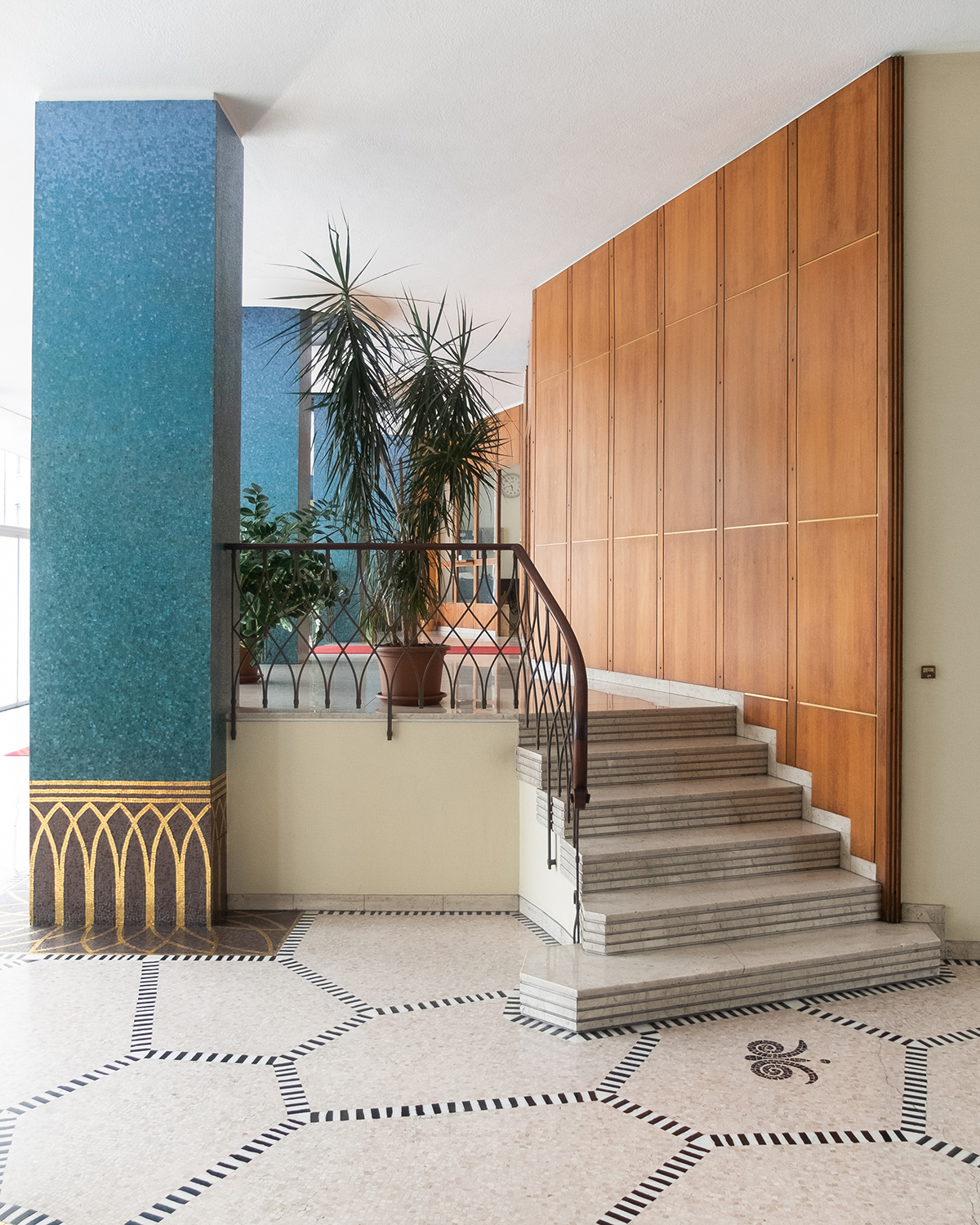

Palazzo Le Sirene
Architect Otto Maraini
1965
This entryway design was conceived in 1965 by the little-known architect and decorator Otto Maraini, who also created the logo for the Le Roi Dancing Hall by Carlo Mollino. This lobby, still in its original form, was designed around the idea of water sirens. The two fountains dominate the space, covered with the decorative tiles crafted by Mosaici Odorico, a family-run company from France that operated in Turin.
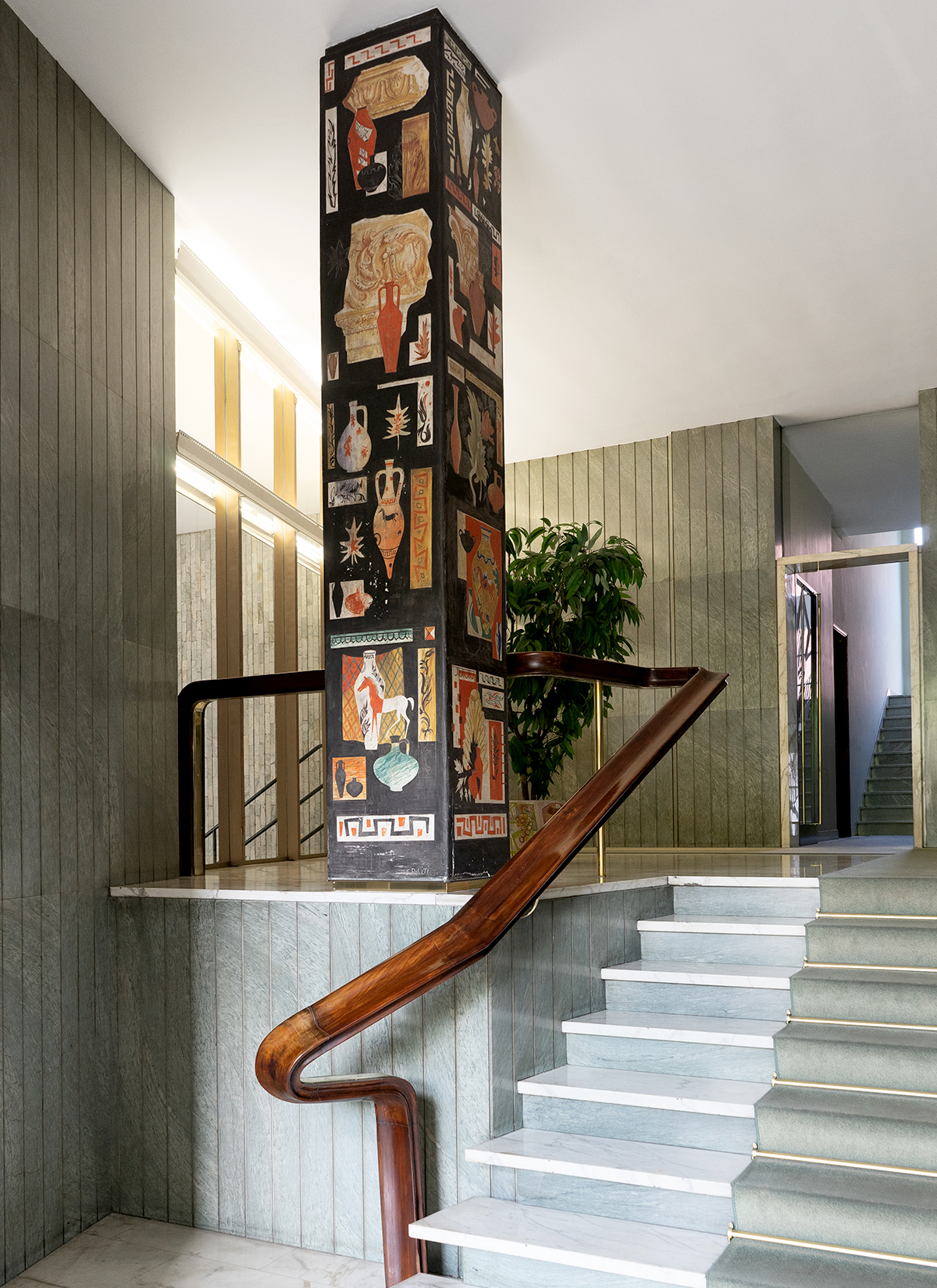
Casa Garavoglia
Architect Carlo Alberto Bordogna, artist E. Politi
1947-1950
Carlo Alberto Bordogna is a forgotten figure of modernist architecture in Turin. Active since the late 1930s, Bordogna designed houses, apartments, shop interiors, cinemas, and theaters. Casa Garavoglia on Corso Galileo Ferraris represents his talent at its best, mainly in the impressive lobby, featuring murals by E. Politi and a dramatically curved wooden handrail.
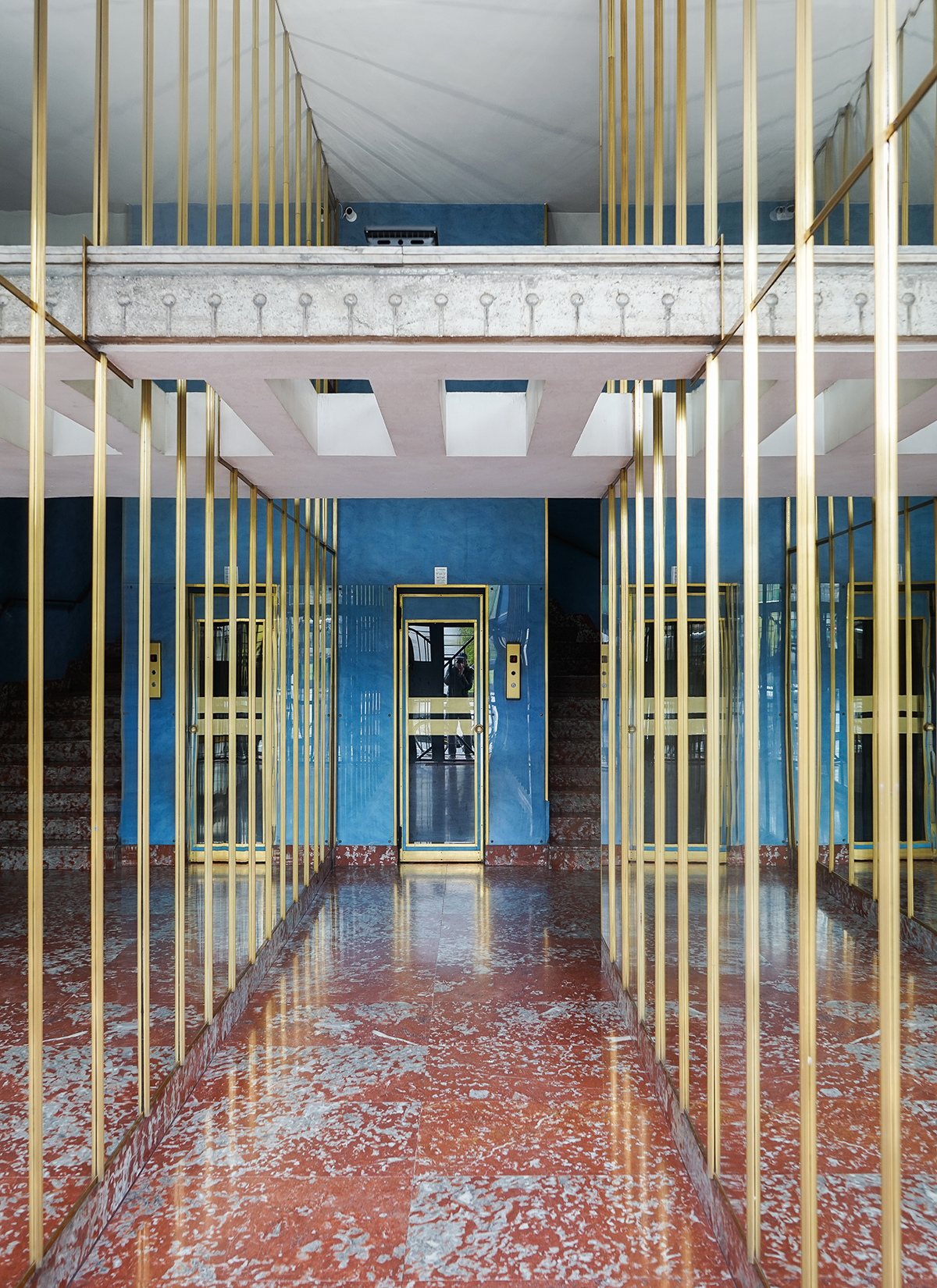
Edificio on Piazza Statuto
Architects Elio Luzi and Sergio Jaretti
c. 1955
Sergio Jaretti, like his colleague Elio Luzi, was a student of Carlo Mollino at Turin Polytechnic. After studying, they co-founded the studio Luzi Jaretti and began to discover the charm of free architectural expression. In the 1950s, they built several eclectic apartment buildings in Turin with completely mirror-clad entryways.
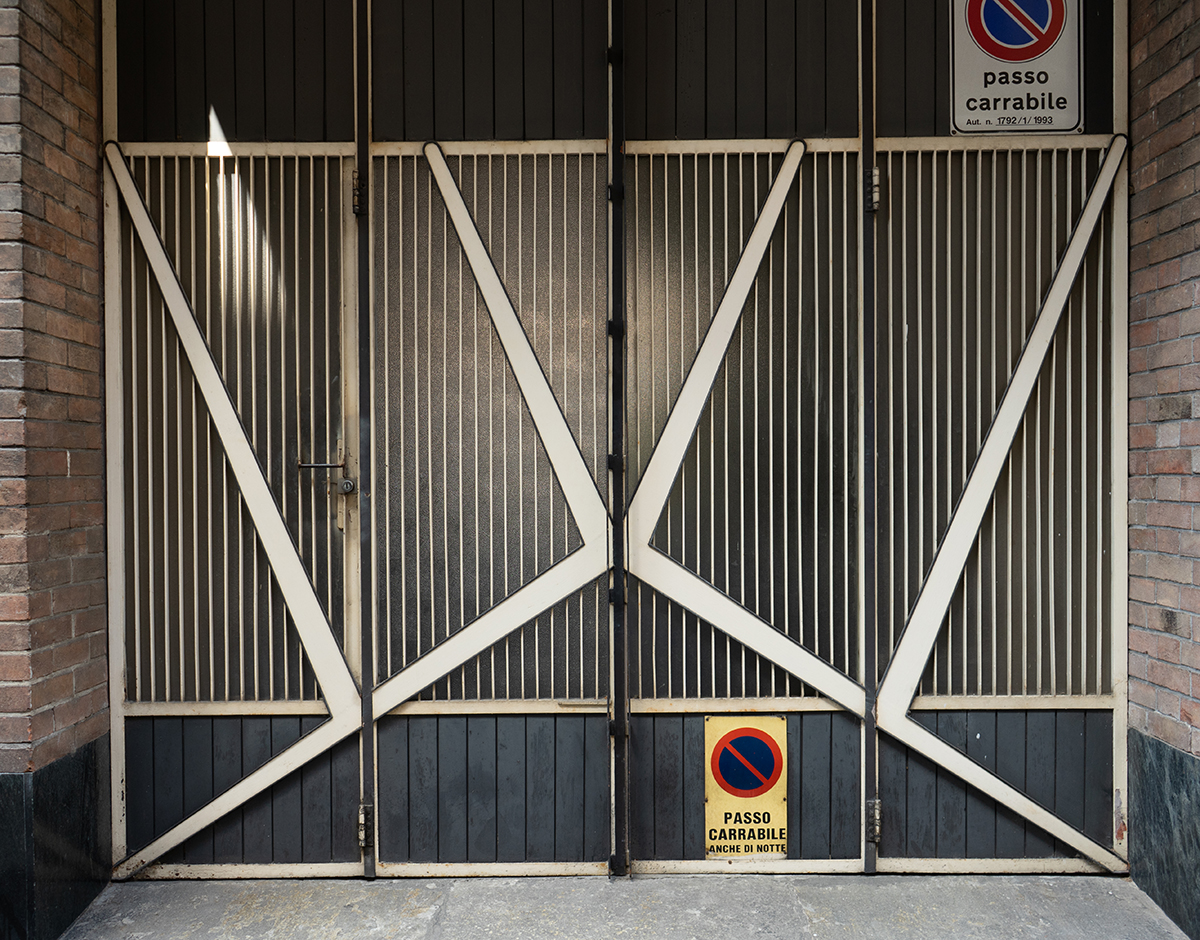
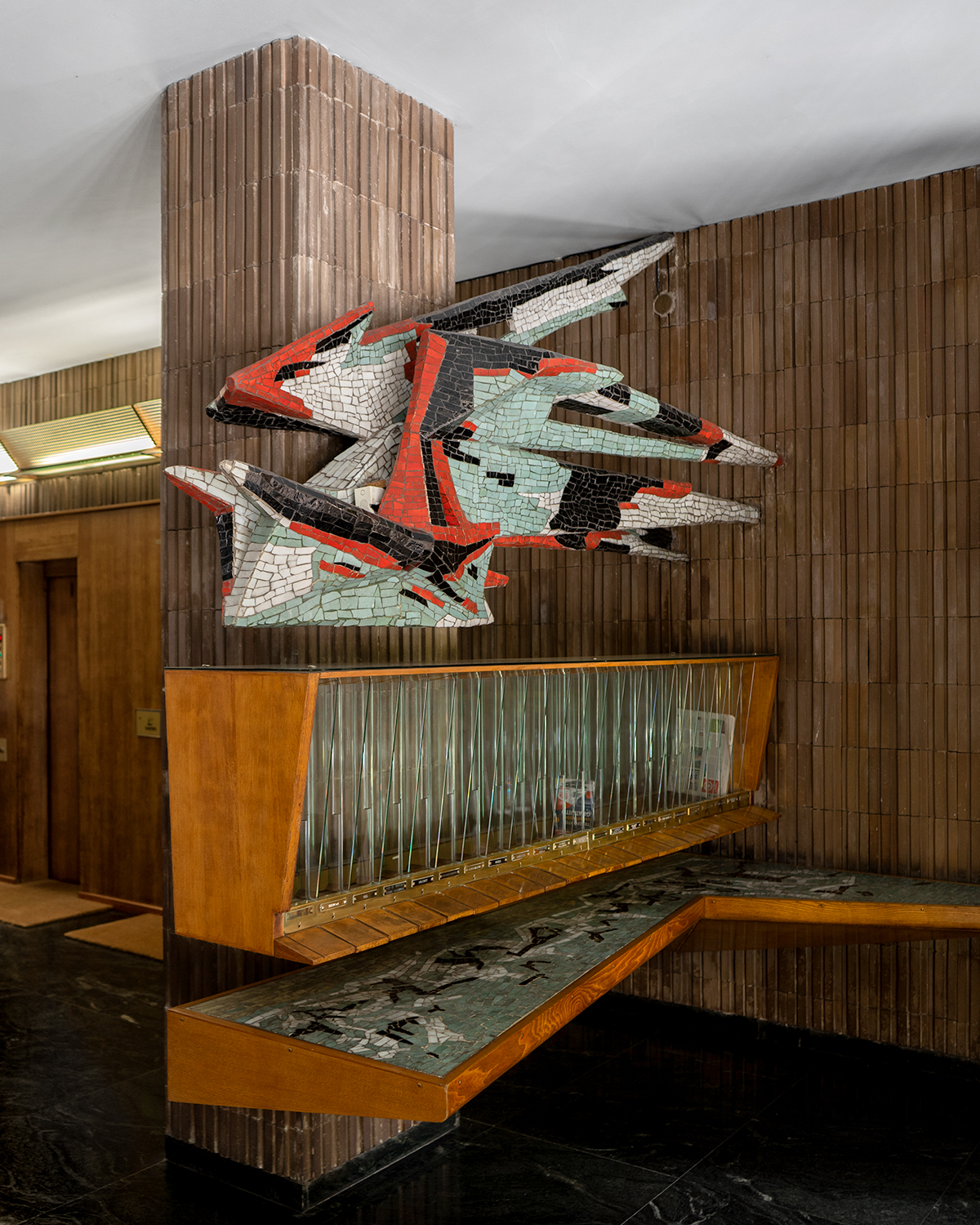
Edificio di abitazione on Corso Re Umberto
Architect Gino Levi Montalcini
1955
Gino Levi Montalcini is a seminal figure of Turin modernism. A pioneer of Italian rationalism between the two wars, and the designer of elegant organic furniture during the 1950s, he built several apartment buildings around the city. This one, on Corso Re Umberto, represents his most dynamic work, including spectacular furnishings and a mosaic-clad sculpture in the lobby.
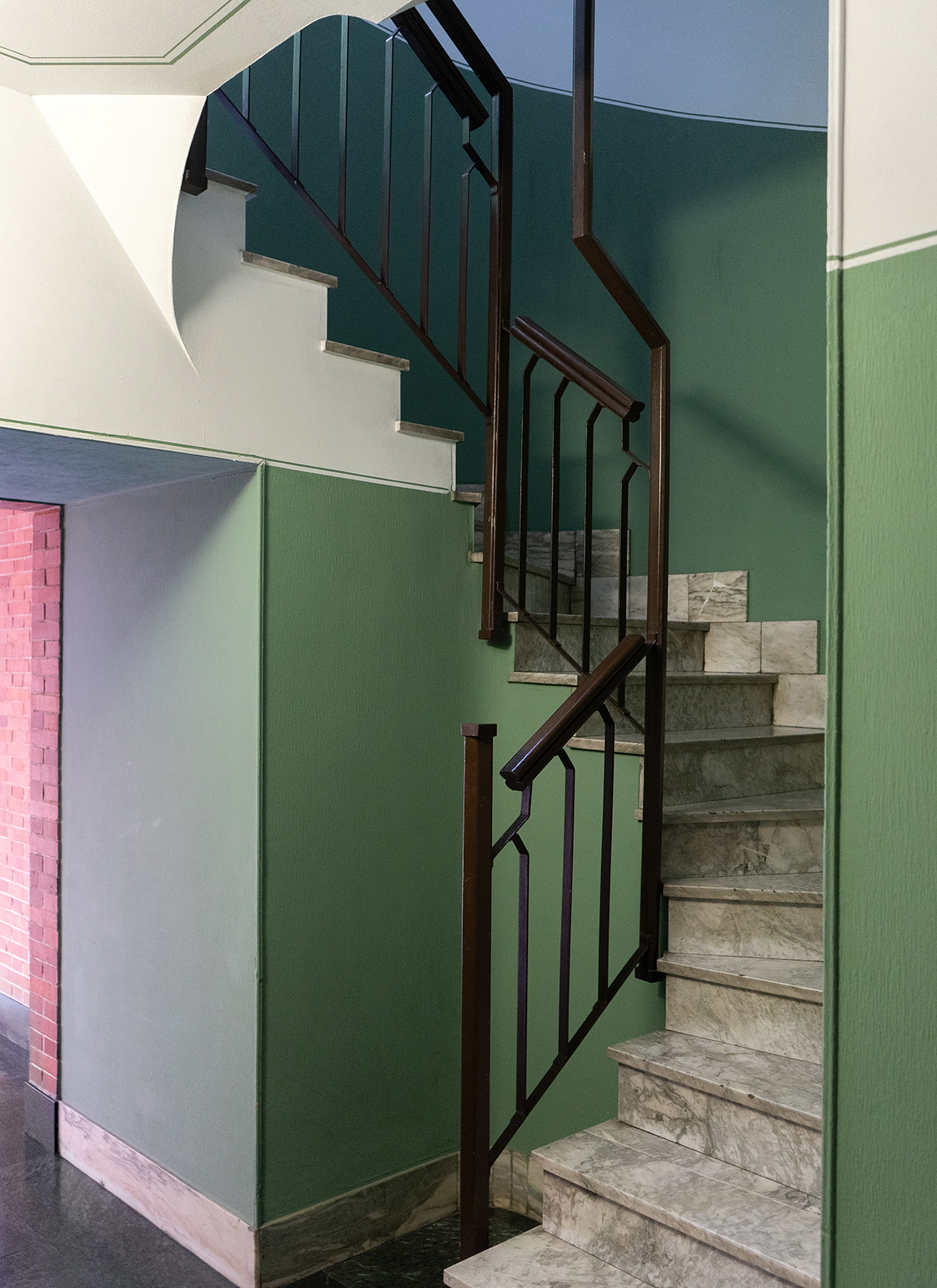
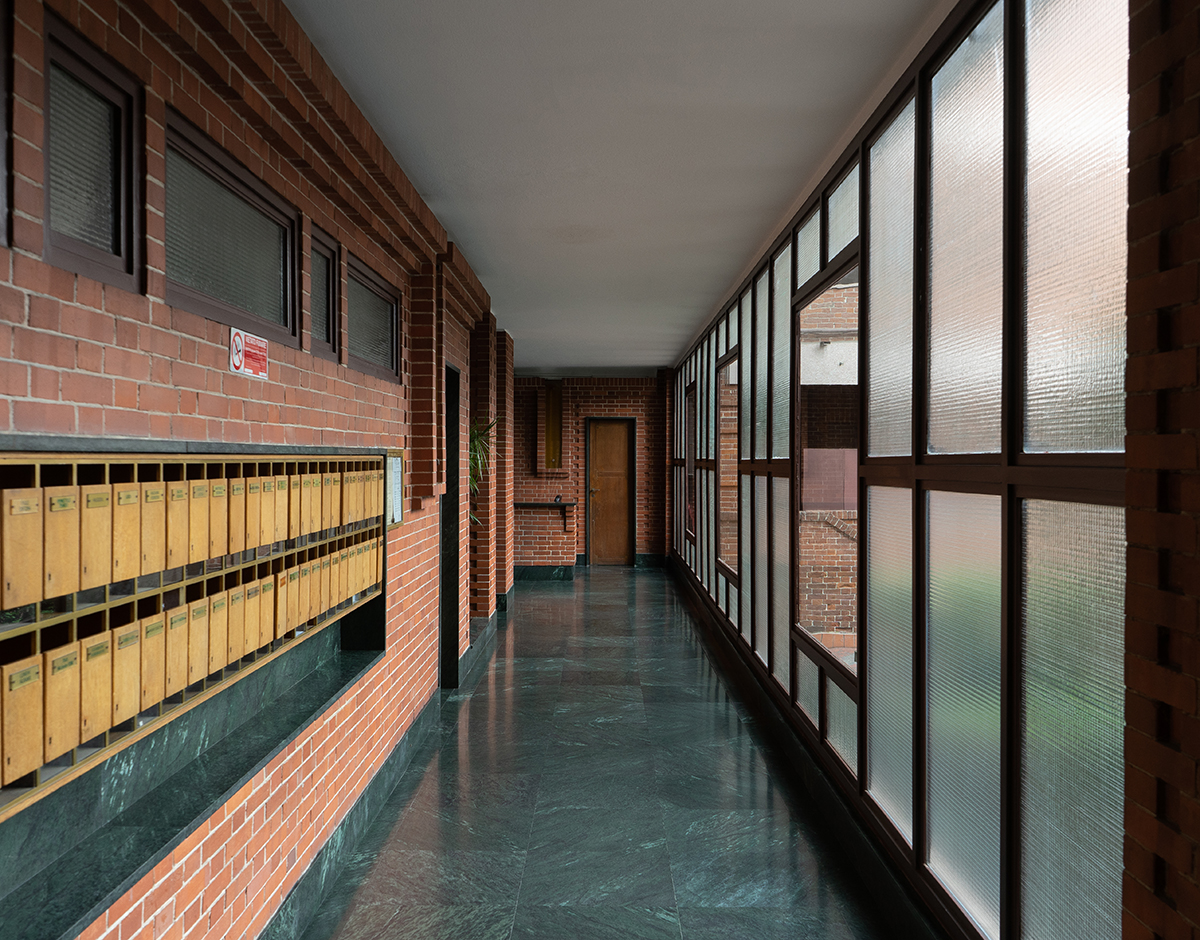
Edificio per abitazioni, uffici e negozi
Architect Pietro Derossi
1962
One of the first projects of Pietro Derossi — an architect, a pioneer of Radical Design, and the designer of famous Pratone chair for Gufram — is located very close to the legendary El Gatto Nero restaurant, also designed by him. This apartment and commercial building features an elegant lobby with brick walls and a green marble floor.
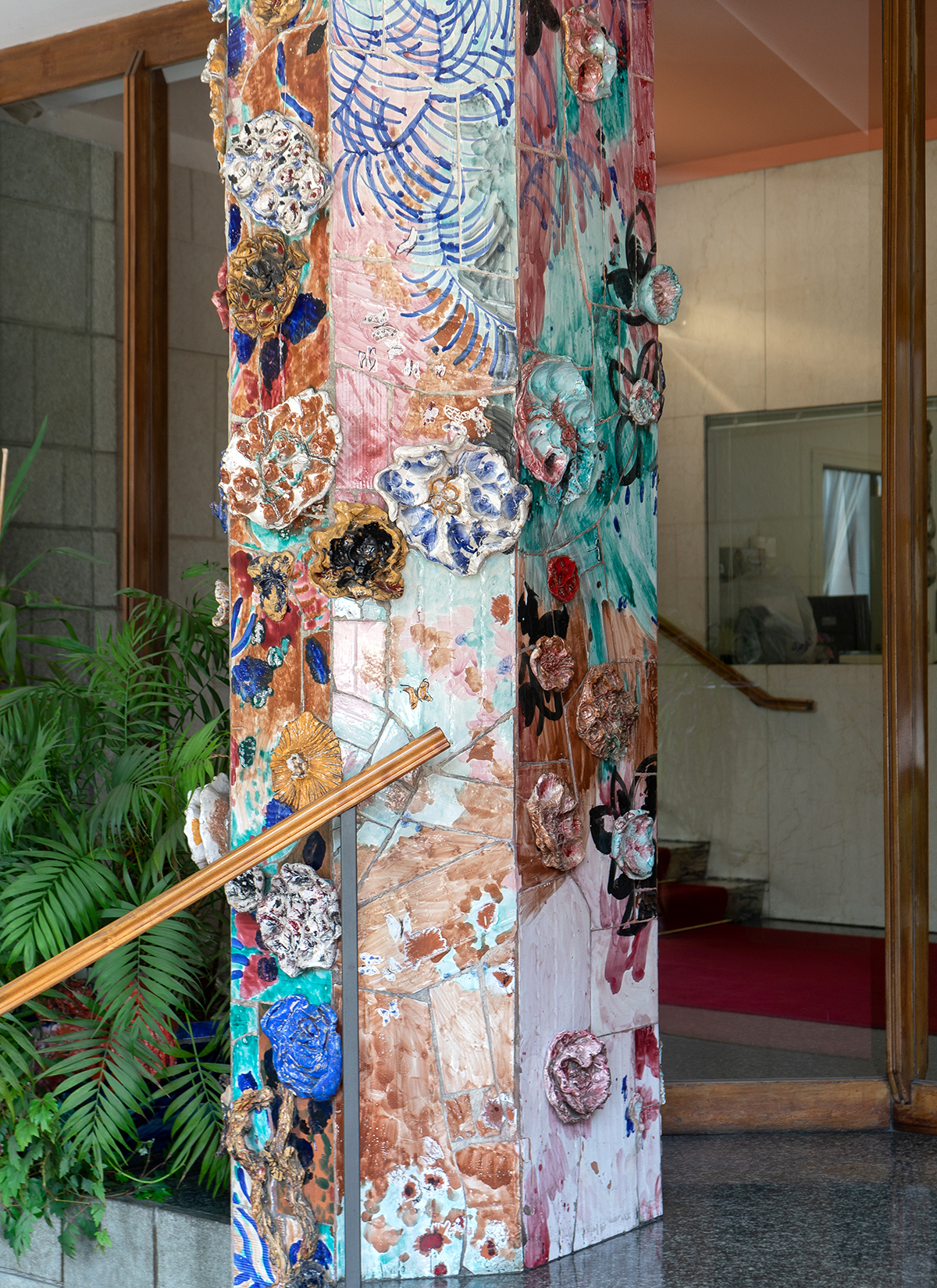
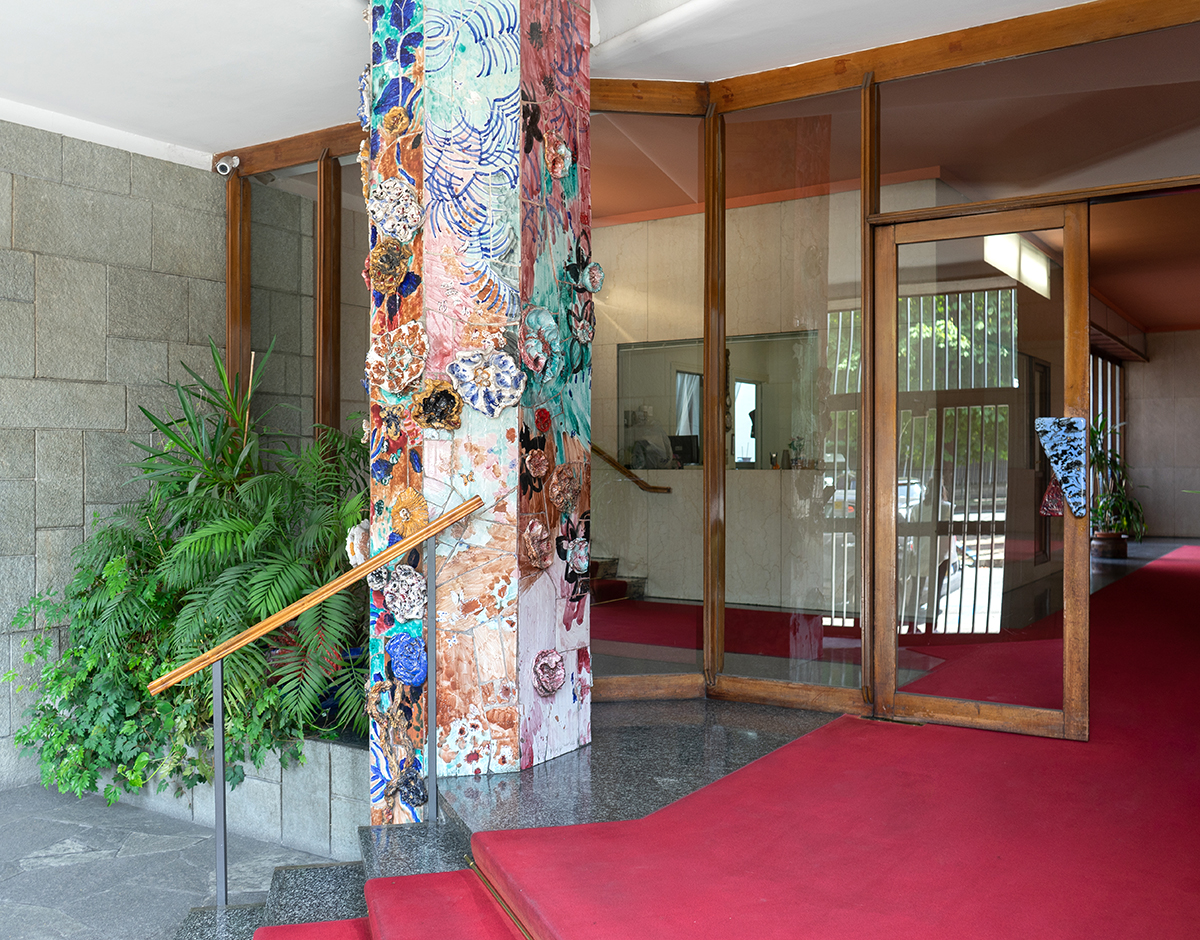
Palazzo on Corso Re Umberto
Architects Felice Bardelli and Domenico Soldiero Morelli, artist Riccardo Chicco
1953
A beautiful modernist building by Felice Bardelli and Domenico Soldiero Morelli holds an impressive entryway adorned by a central column that’s covered in colorful ceramic applications, created by artist Riccardo Chicco in a poetic abstract style.
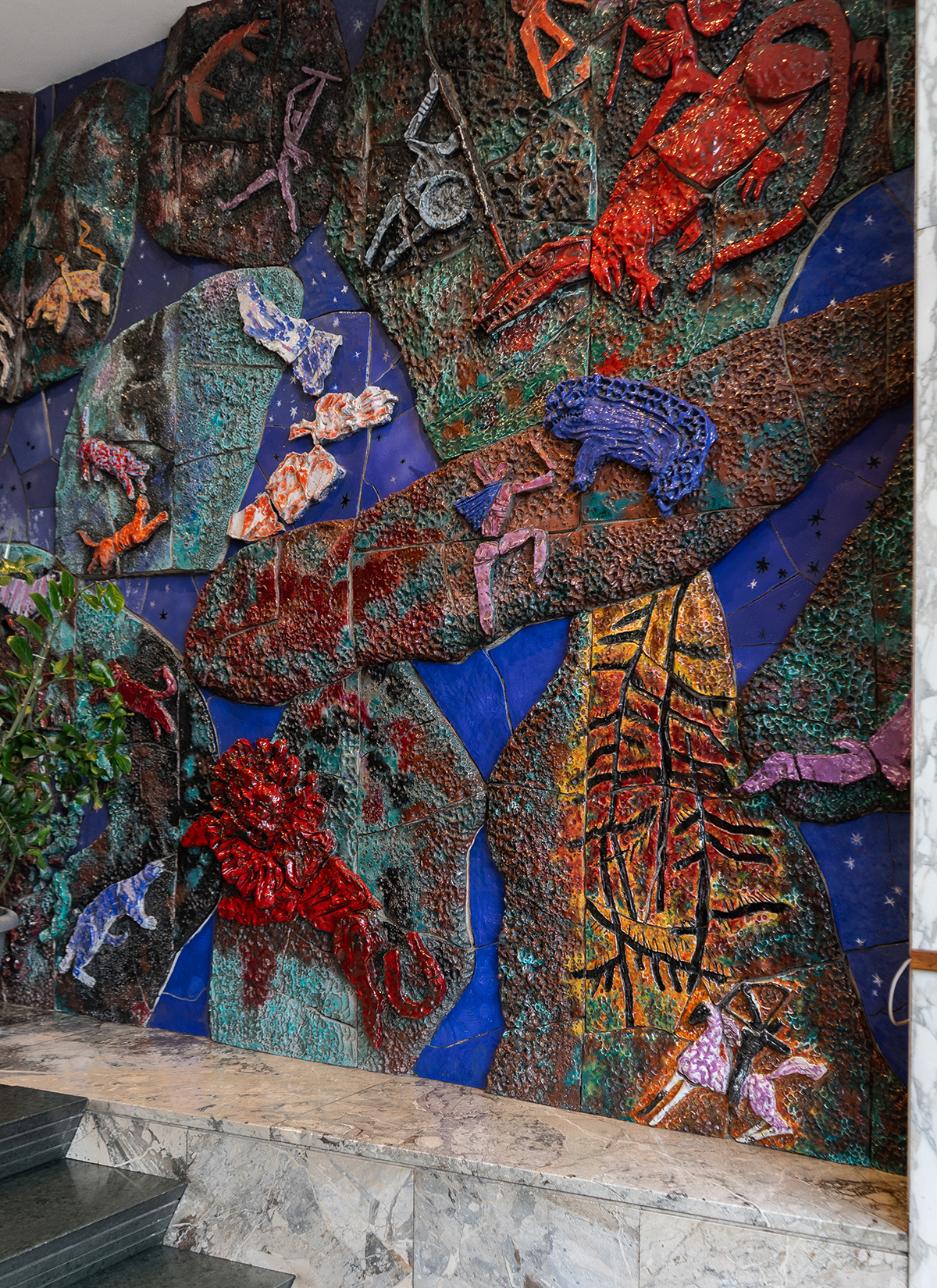
Palazzo on Corso Cairoli
Architect Gualtiero Casalegno, artist Riccardo Chicco
1952
Standing by the river in the centre of Turin, this apartment building designed by architect Gualtiero Casalegno features an elegant facade of perforated ceramic panels. Behind the main door, a large ceramic wall artwork by Riccardo Chicco celebrates the origins of our civilization with motifs of prehistorical people hunting animals — the favorite topic of the artist.
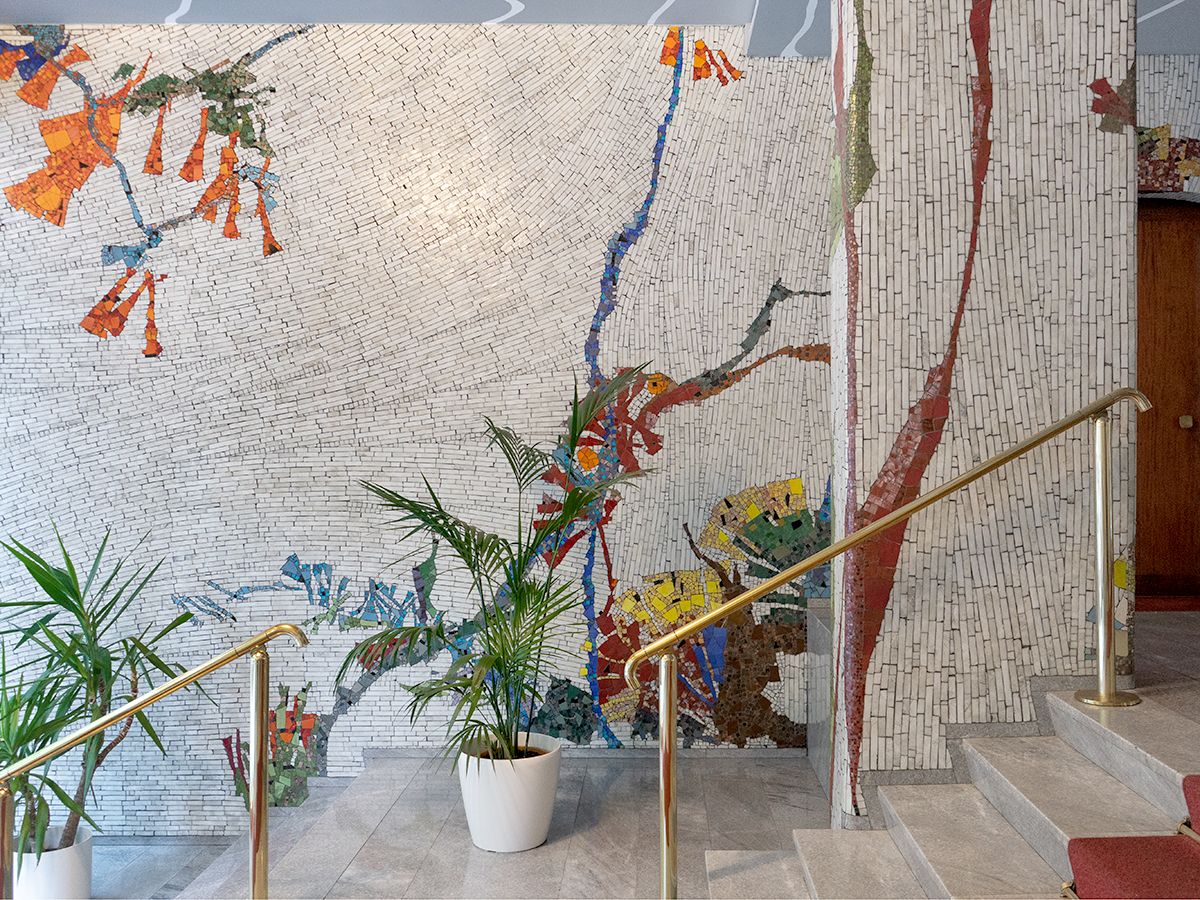
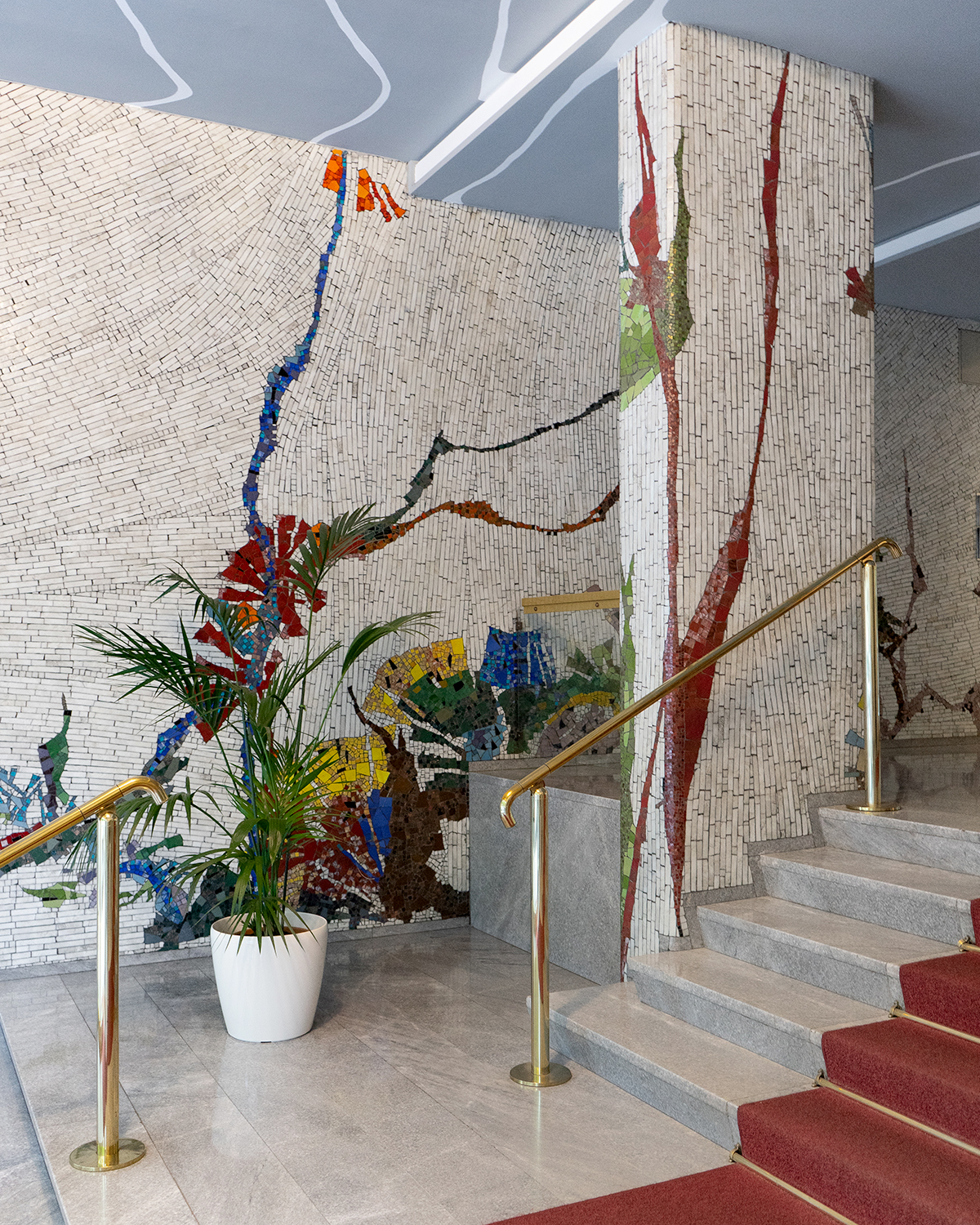
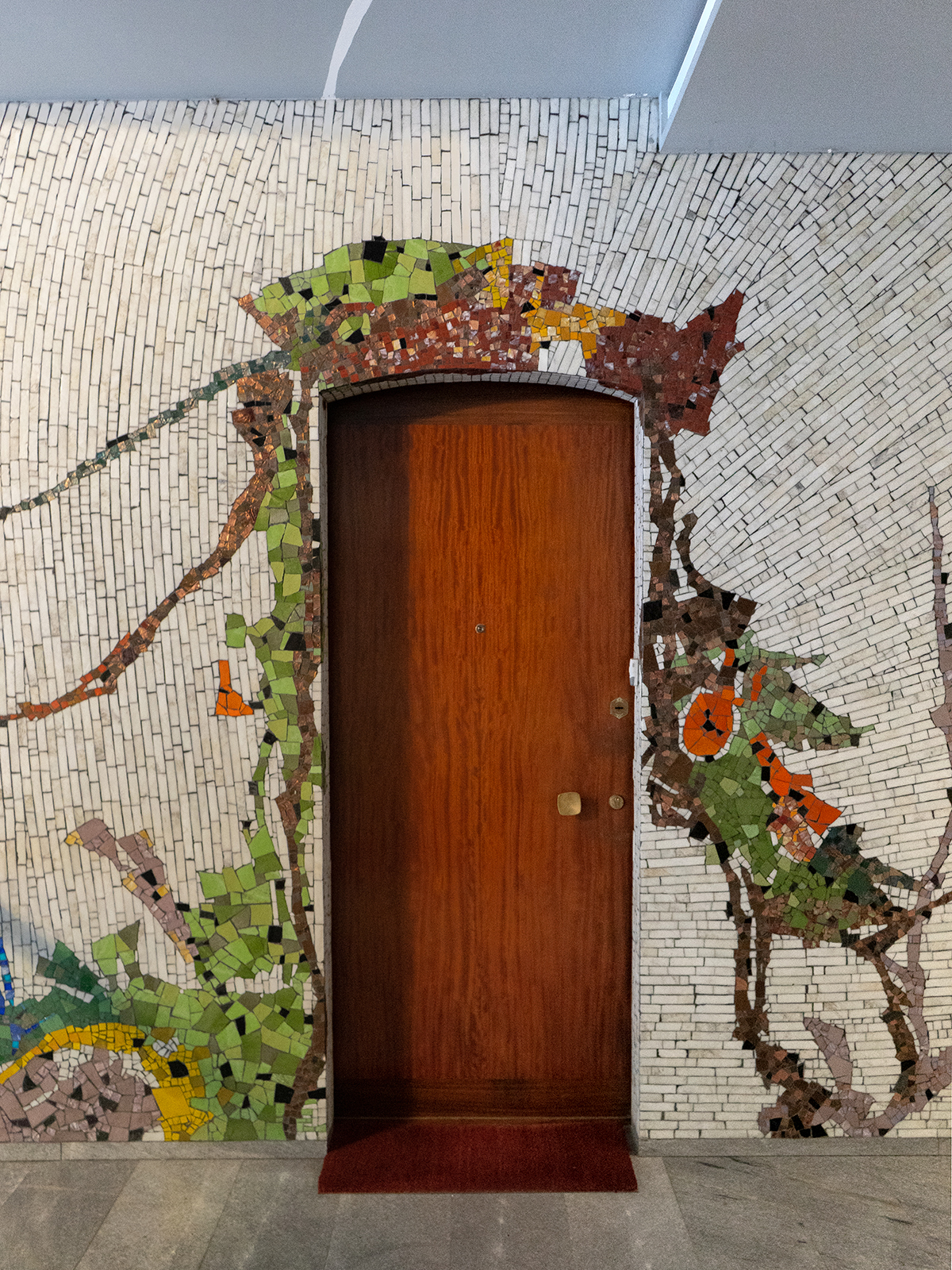
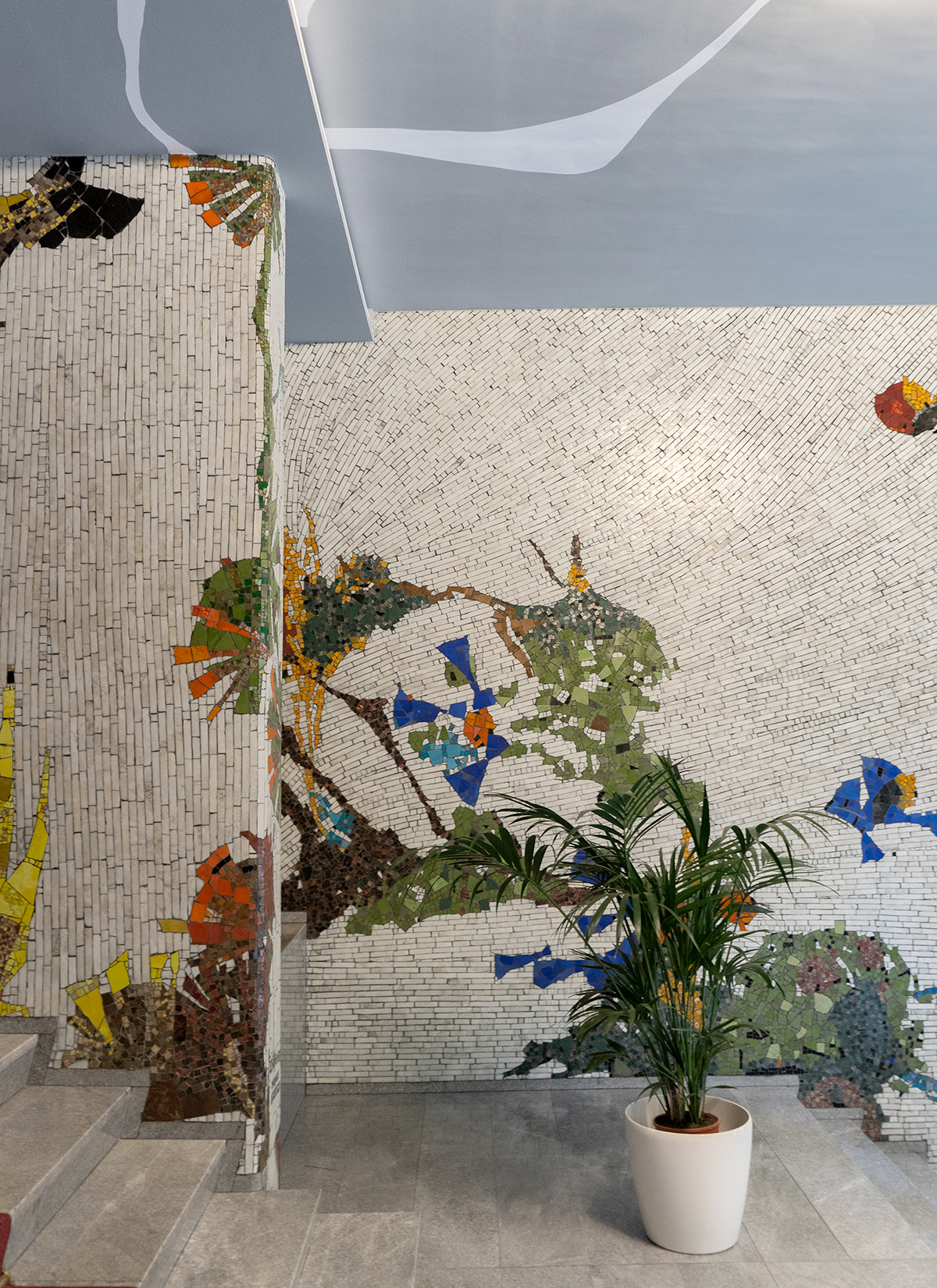
Palazzo ex Cooperativa Villaggio Giornalisti
Architect Luigi Buffa, artist Egi Volterrani
1958-1961
Mosaic artist Egi Volterrani created several entry interiors in Turin during the 1950s. One of his most spectacular can be found inside Palazzo ex Cooperativa Villaggio Giornalisti, built by architect Luigi Buffa. Using Mosaici Odorico, Volterrani envisioned the space with abstract colorful motifs influenced by Art Nouveau.
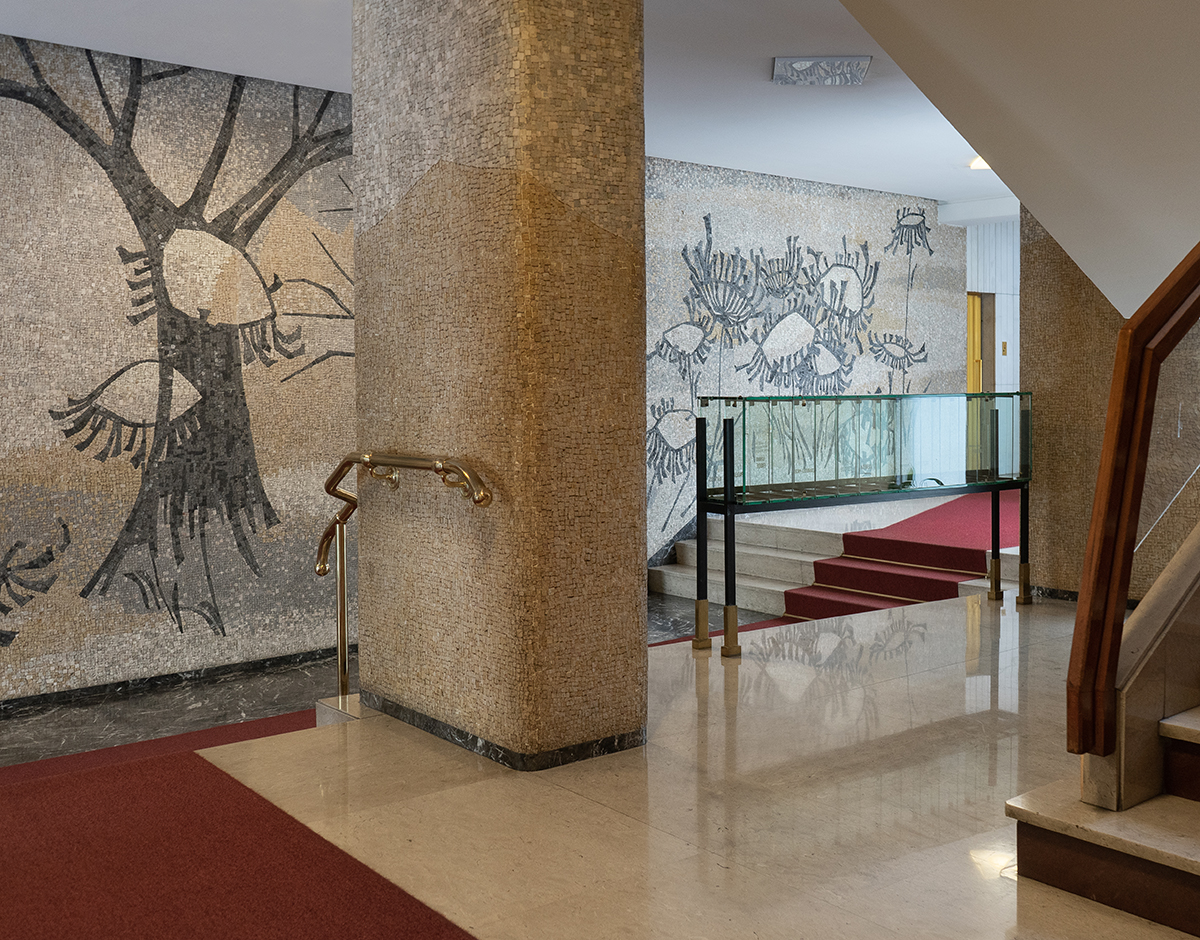
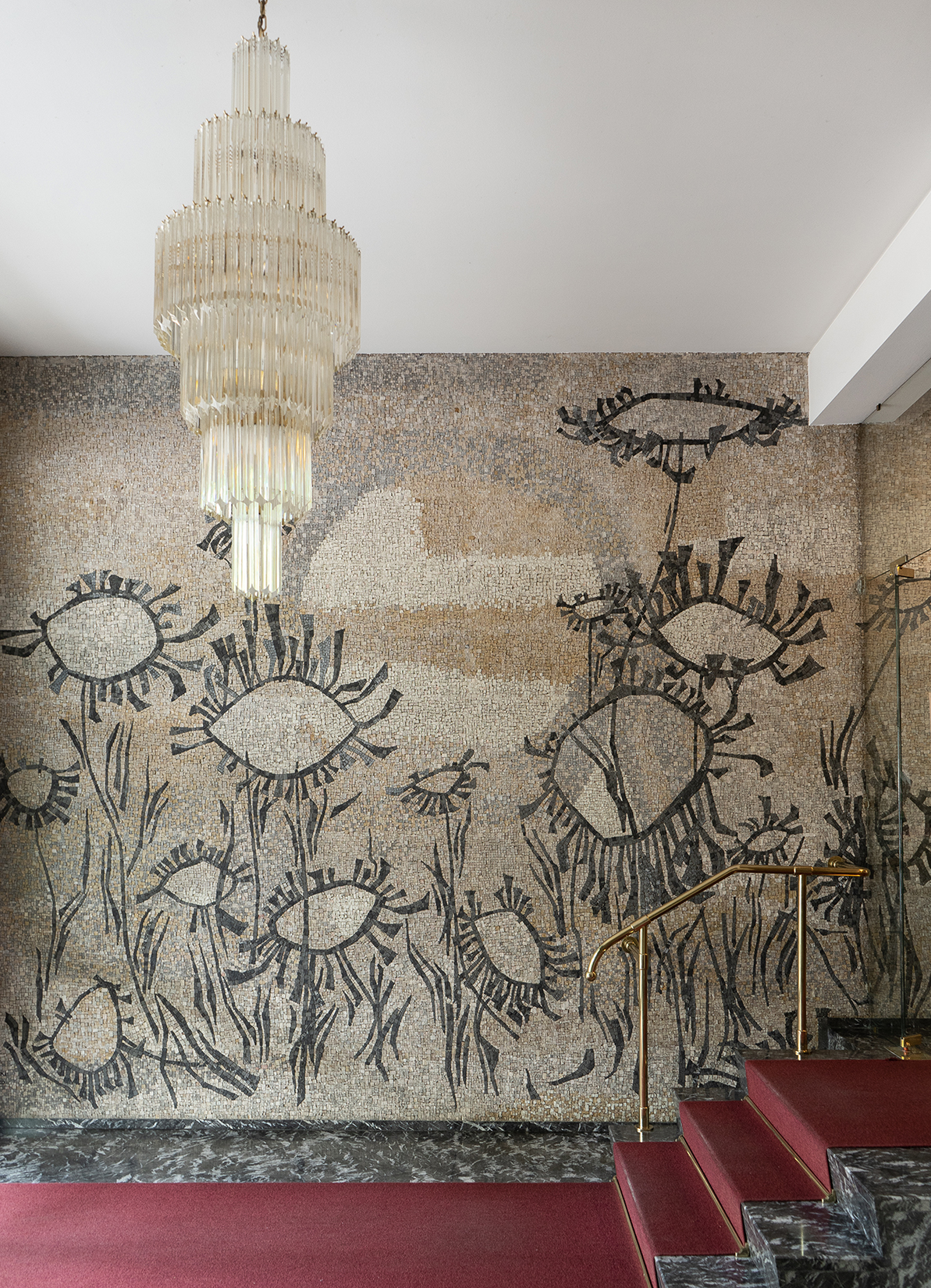
Casa Polastri
Architect Alberto Beveresco, artist Egi Volterrani
1958
Another example of mosaic virtuosity in Turin can be found in the entryway of the apartment and office building Casa Polastri, created by the artist and theater-designer Egi Volterrani. All of the walls in the lobby are covered in monochromatic mosaic patterns with organic forms.
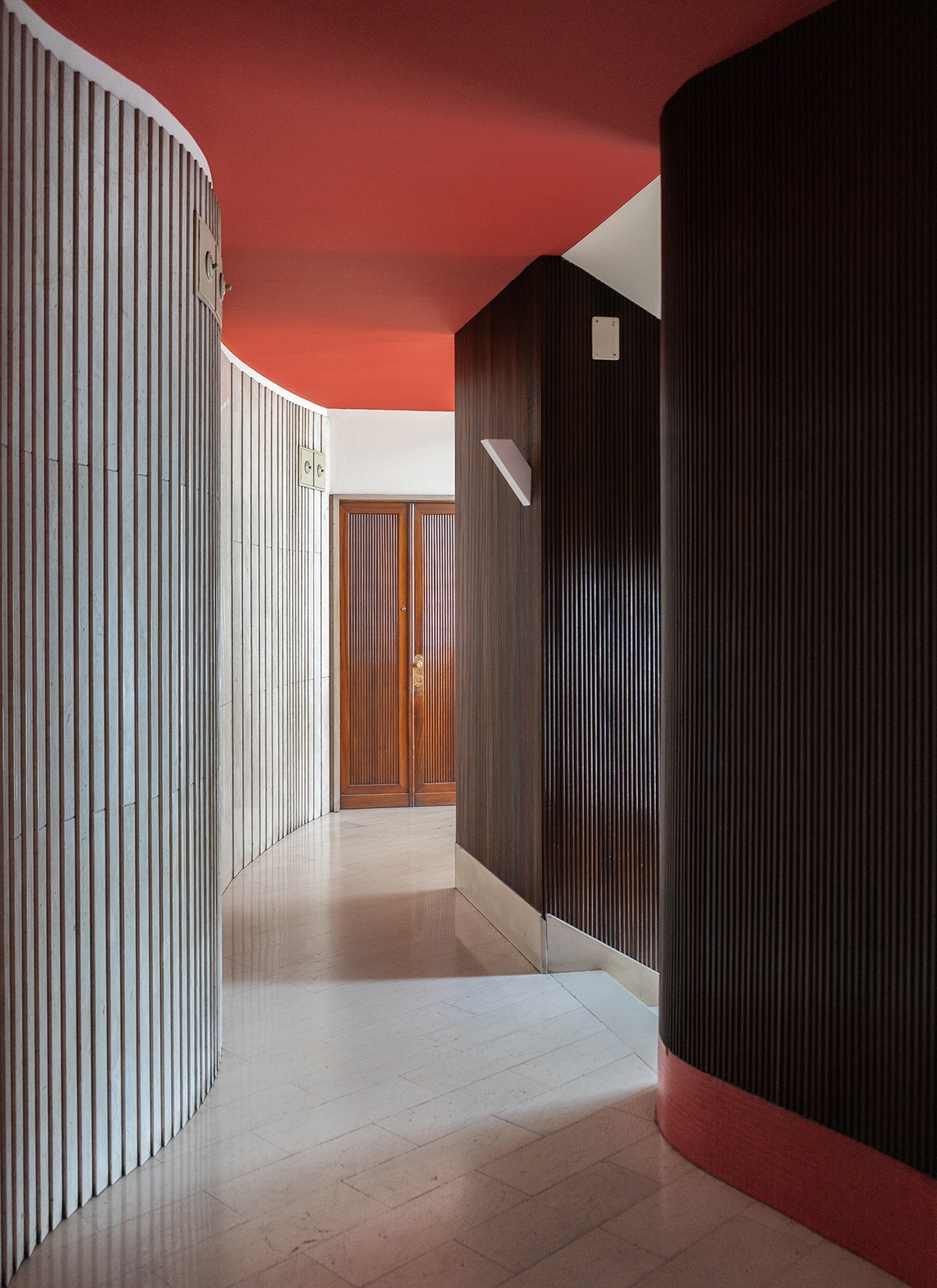
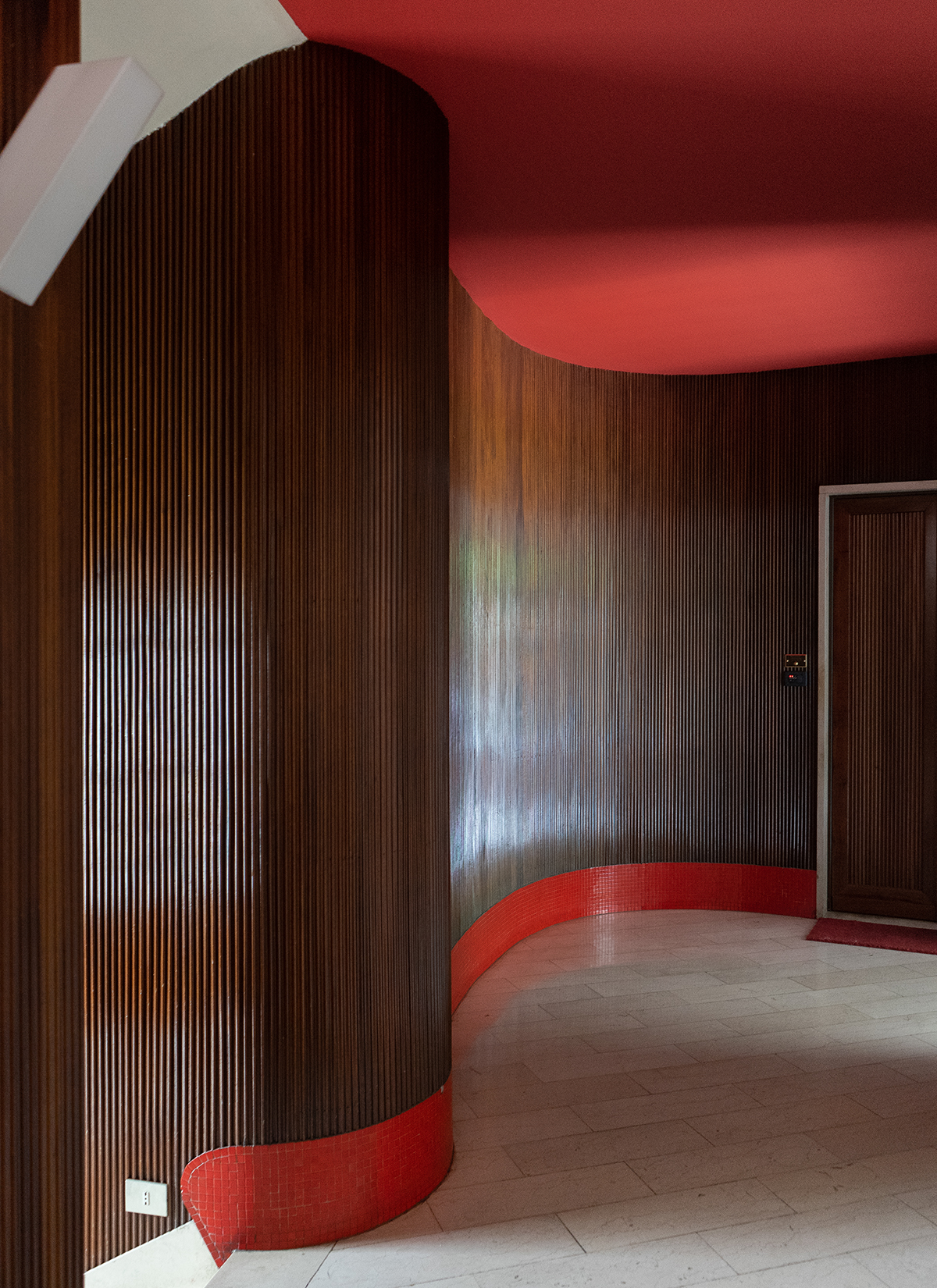
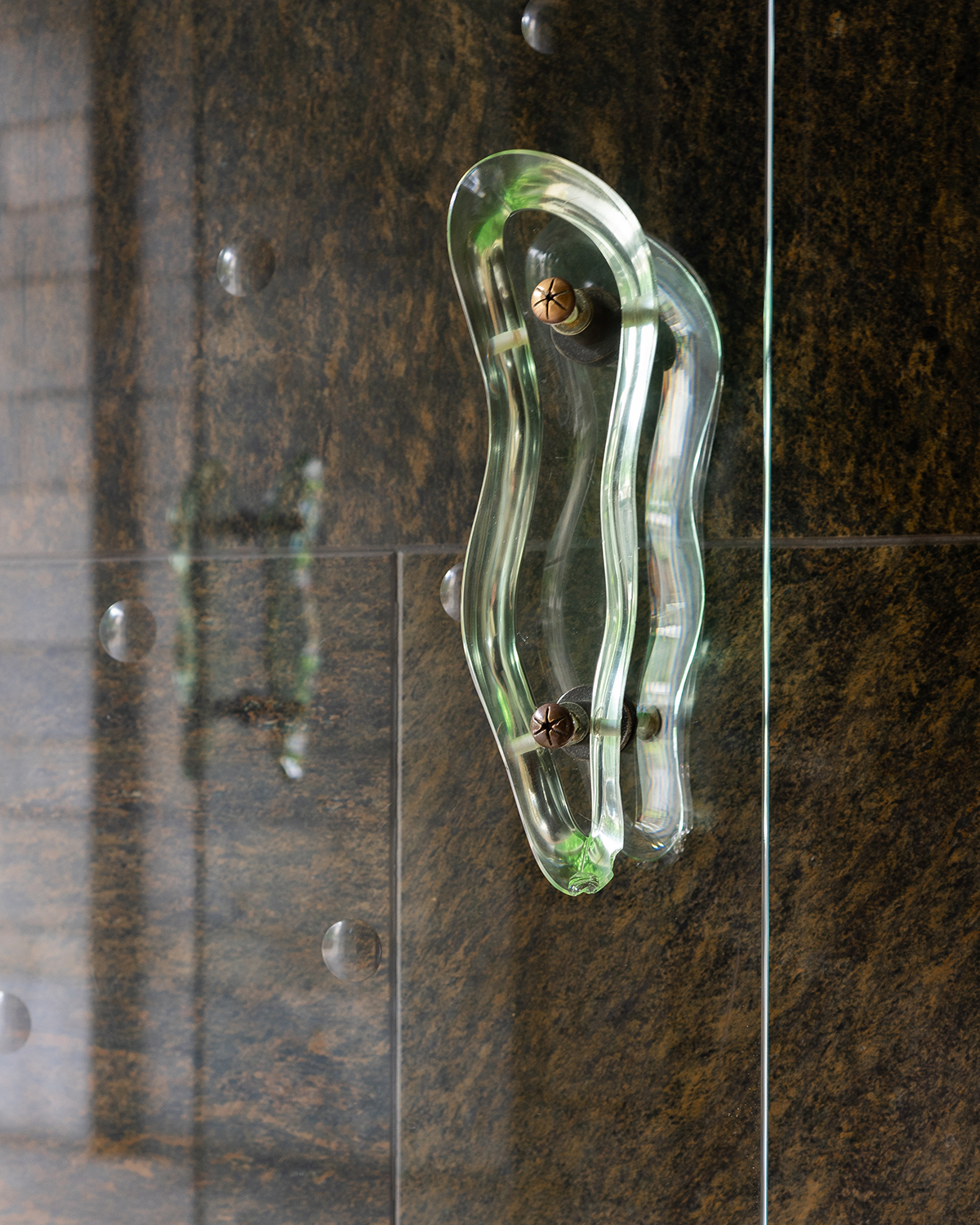
Residential Building
Architect Ada Bursi
c. 1955
Ada Bursi was one of the first female architects working in Italy. During the 1950s, she created an impressive ensemble of work, including furniture design, exhibition design, and architecture. This refined apartment building features elegant sensual forms, its curved wood-panelled walls contrasting with the red color of the ceiling. The main door features organic glass door handles.
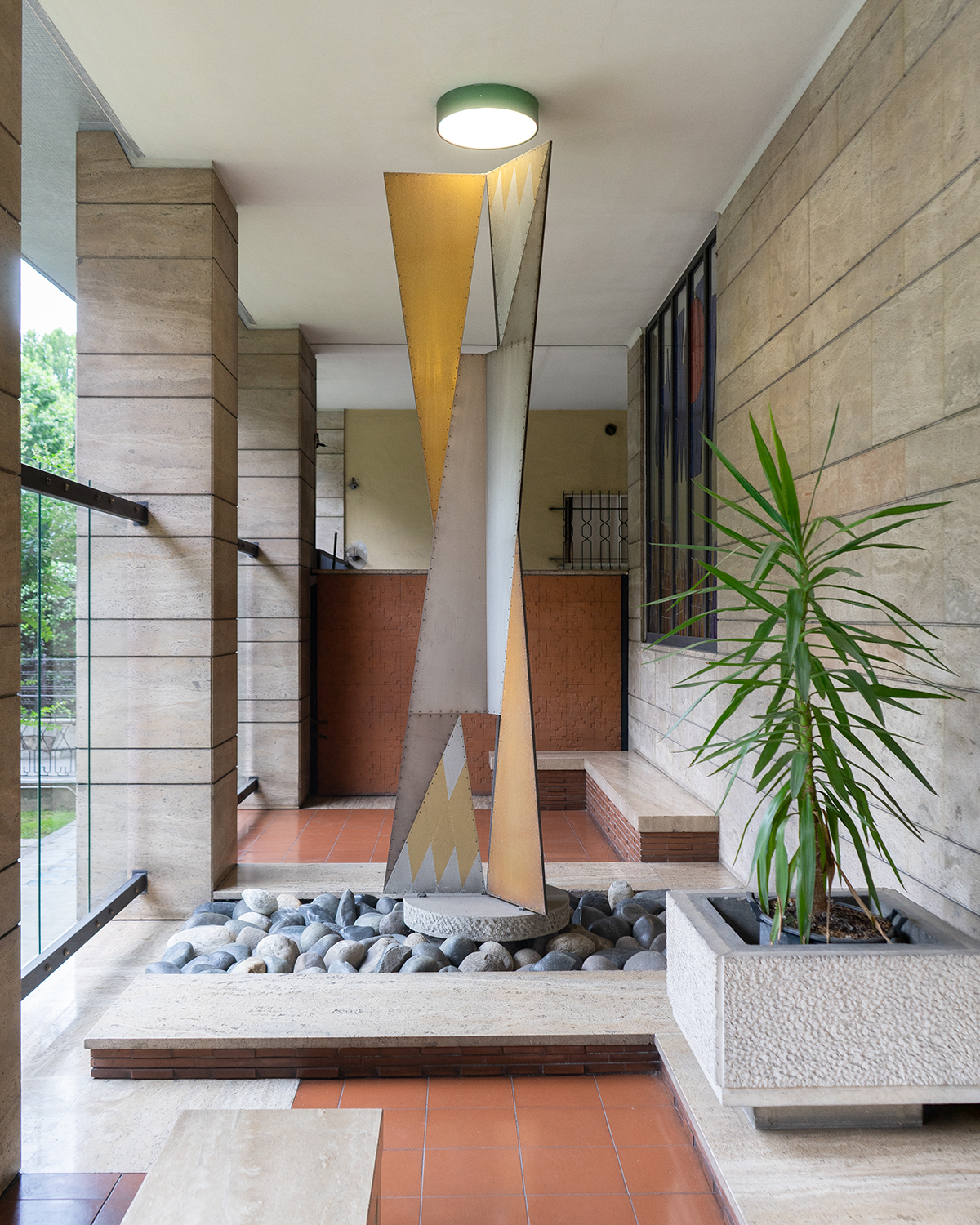
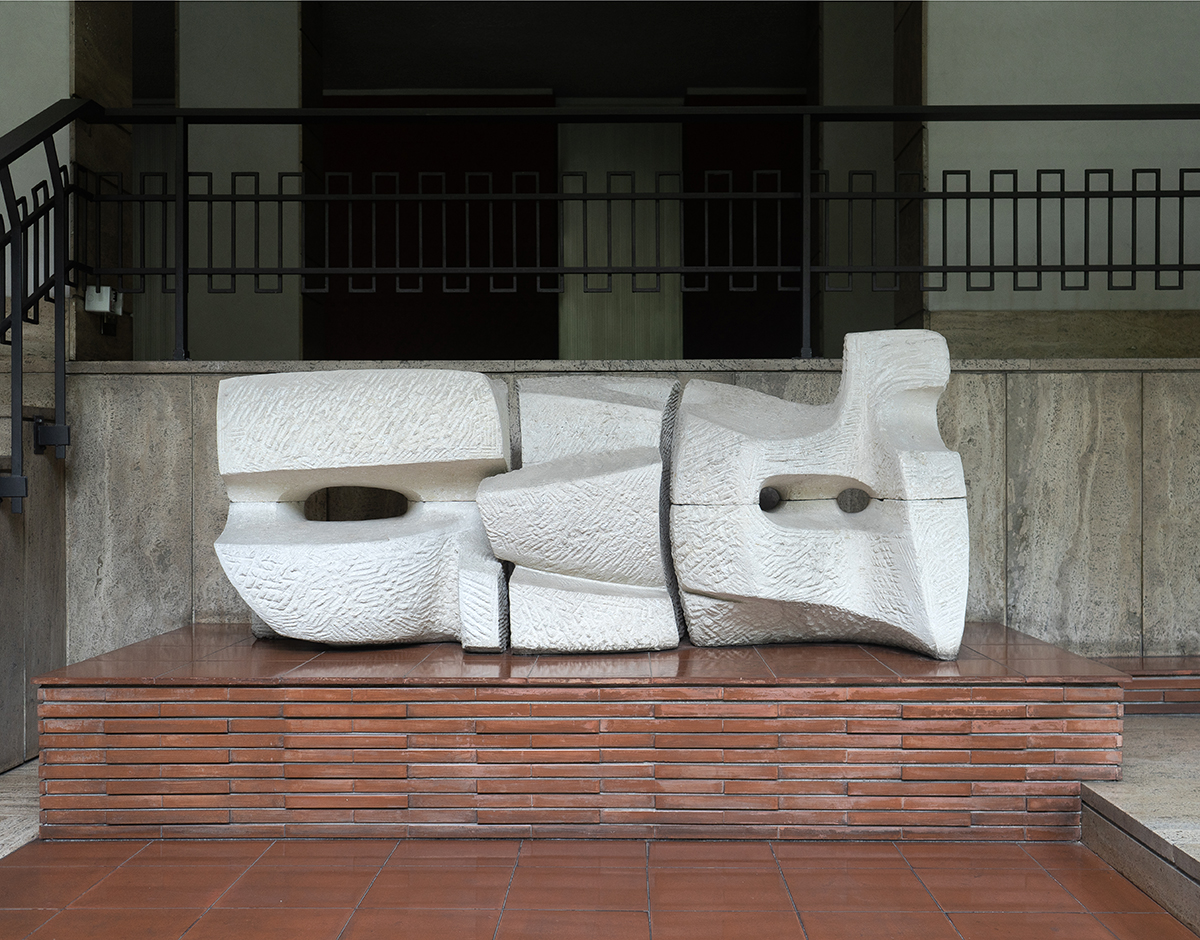
Condominio Montecucco
Architect Carlo Alberto Bordogna
1963
This large apartment building built by architect Carlo Alberto Bordogna in his mature style is equipped with several individual entryways, always decorated by different artworks, including a tall, abstract metal sculpture and a reclining female figure reminiscent of Henry Moore’s work.
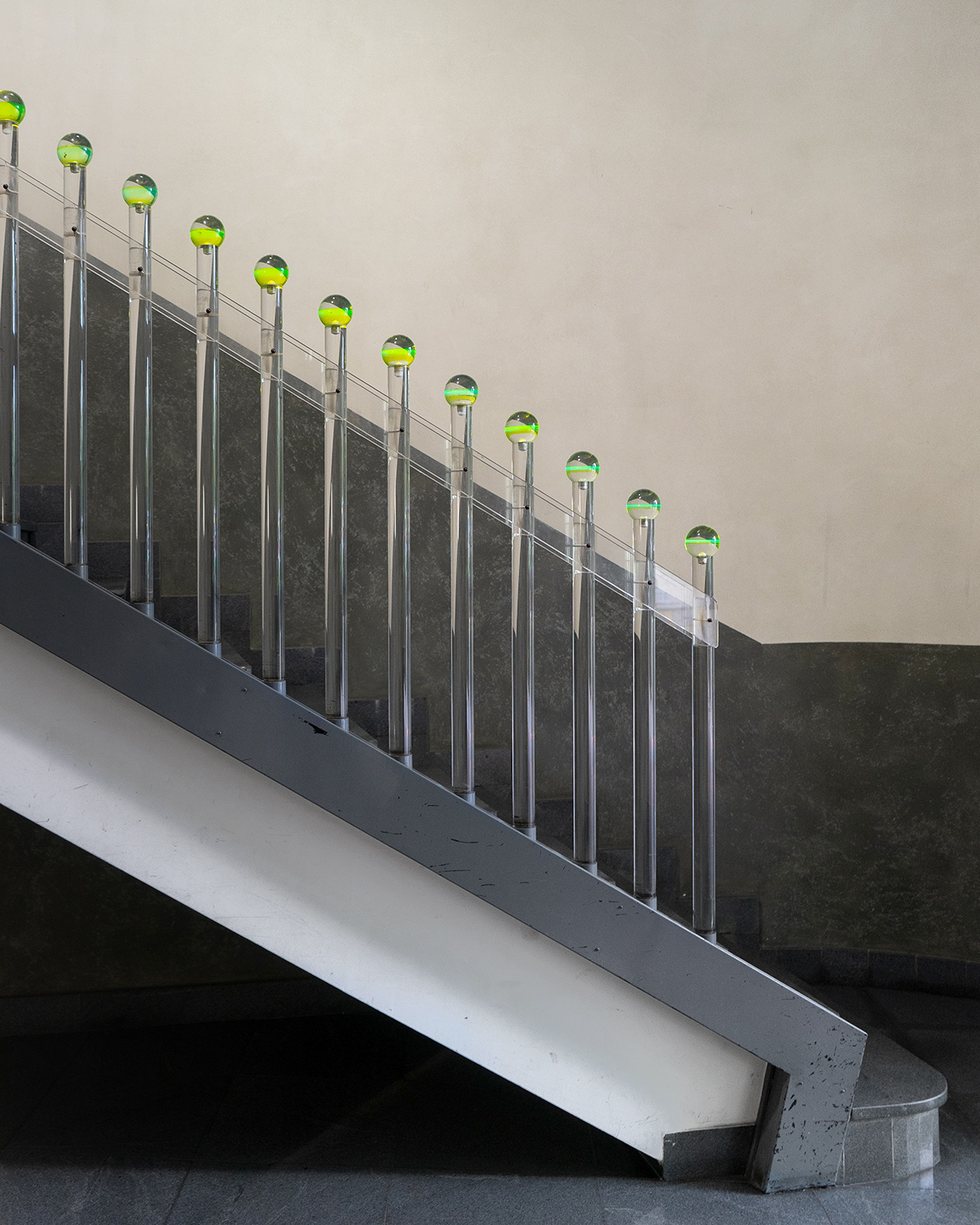
Torre Mirafiori
Architects Elio Luzi and Sergio Jaretti
1970-1974
One of the last projects of architects Elio Luzi and Sergio Jaretti demonstrated their new direction towards Radical Design and Pop architecture. The residential skyscraper Torre Mirafiori, on the outskirts of the city, hides an impressive lobby featuring Pop-influenced typography and a colorful translucent-plastic handrail.

